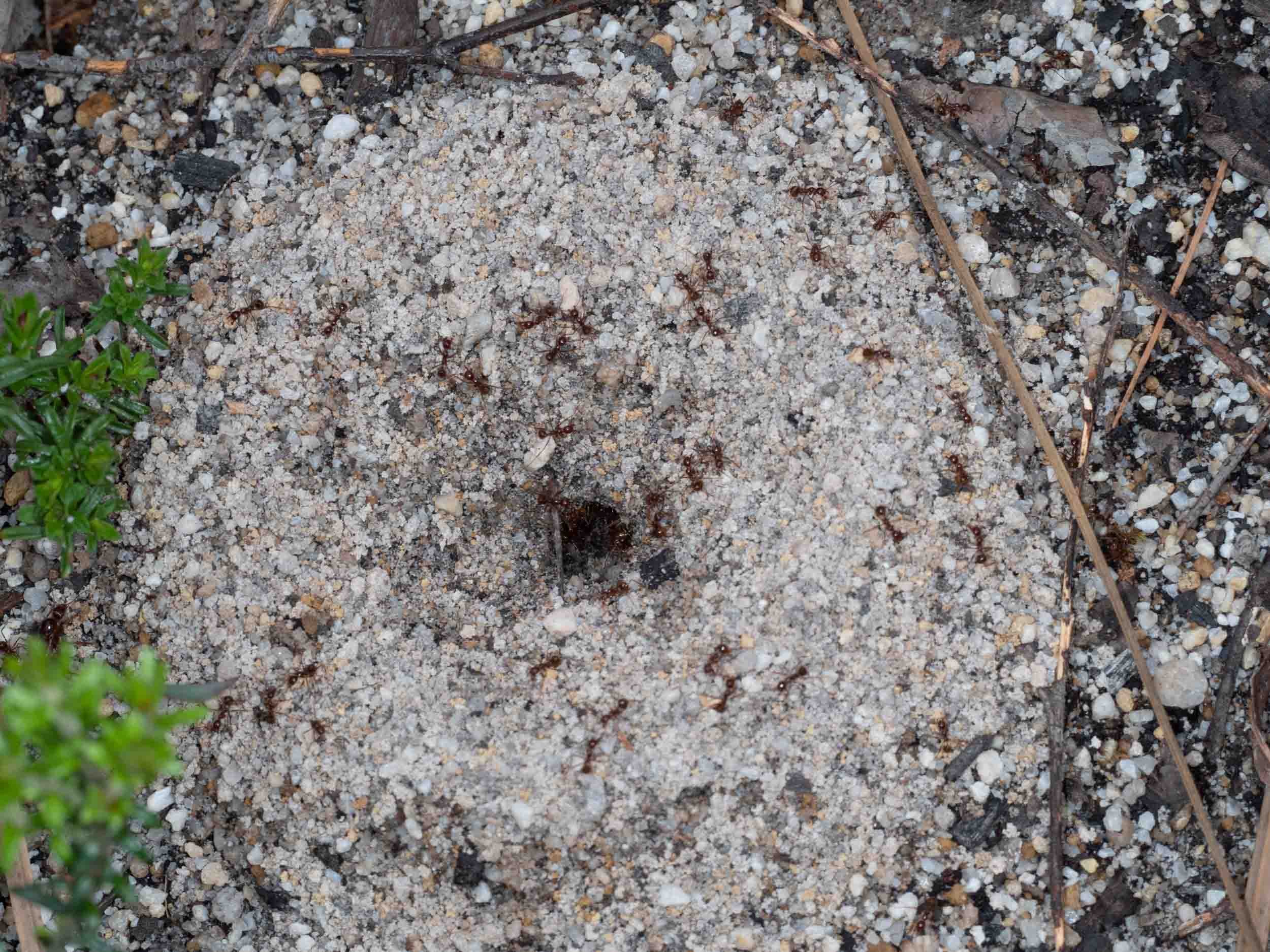
Attentive workers on the mound surrounding the nest entrance during the swarming event.
5pm, 18/10/2021
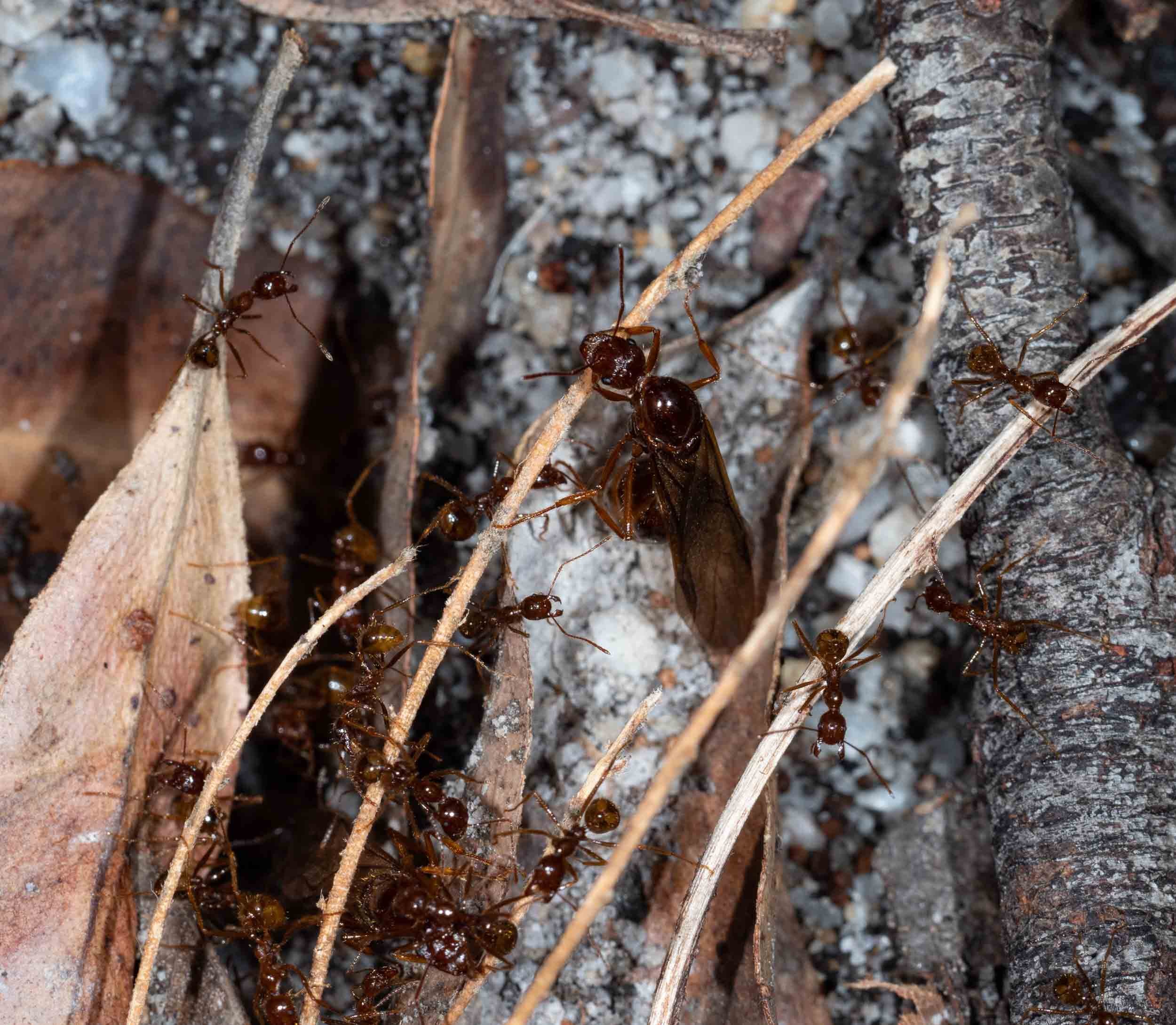
Workers ushering queen out of the nest, one of many winged ants to take flight during this swarming event.
5pm, 18/10/2021
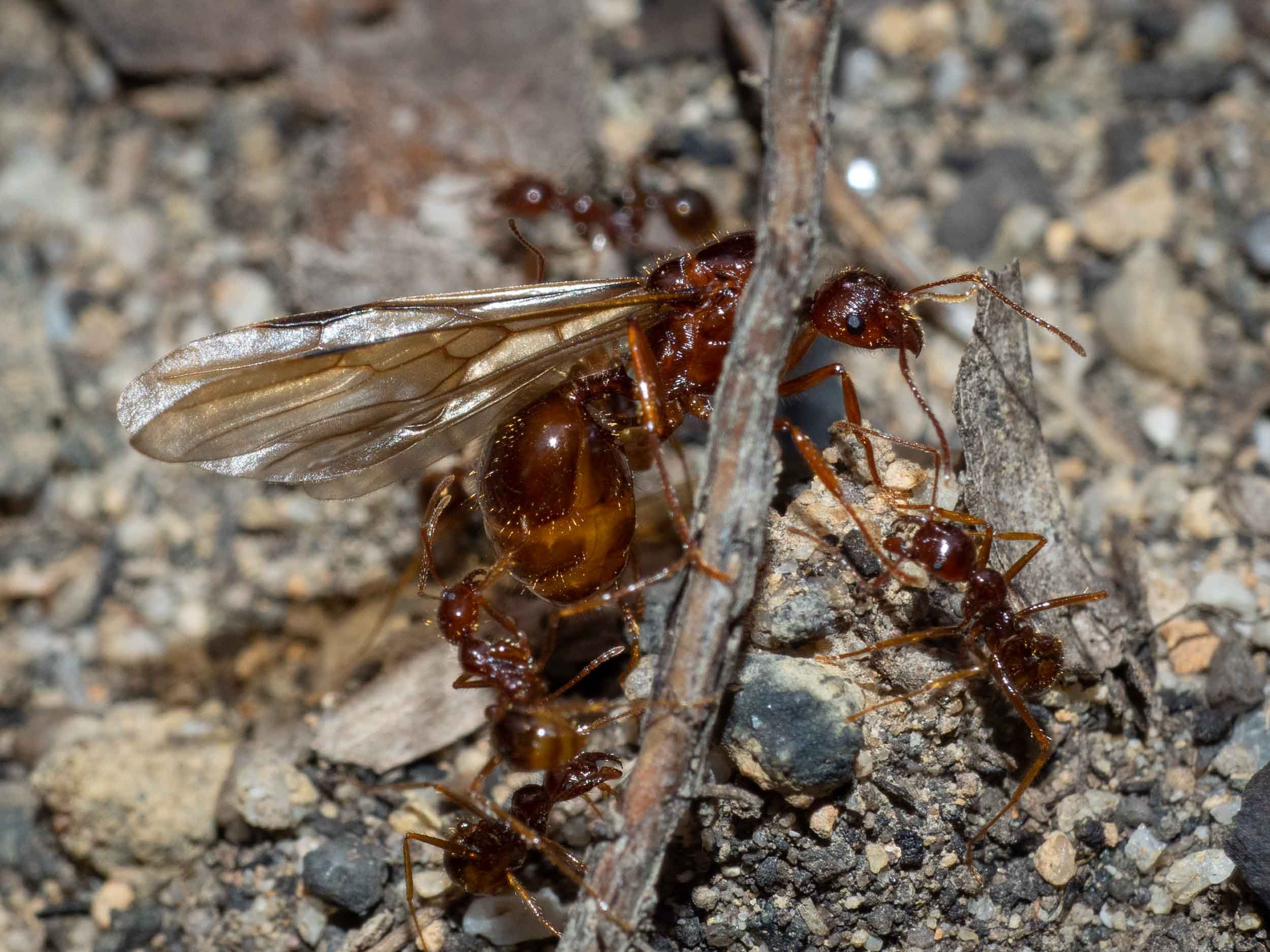
A newly emerged, winged queen attended by workers as she moves away from the nest mound.
6pm, 18/10/21
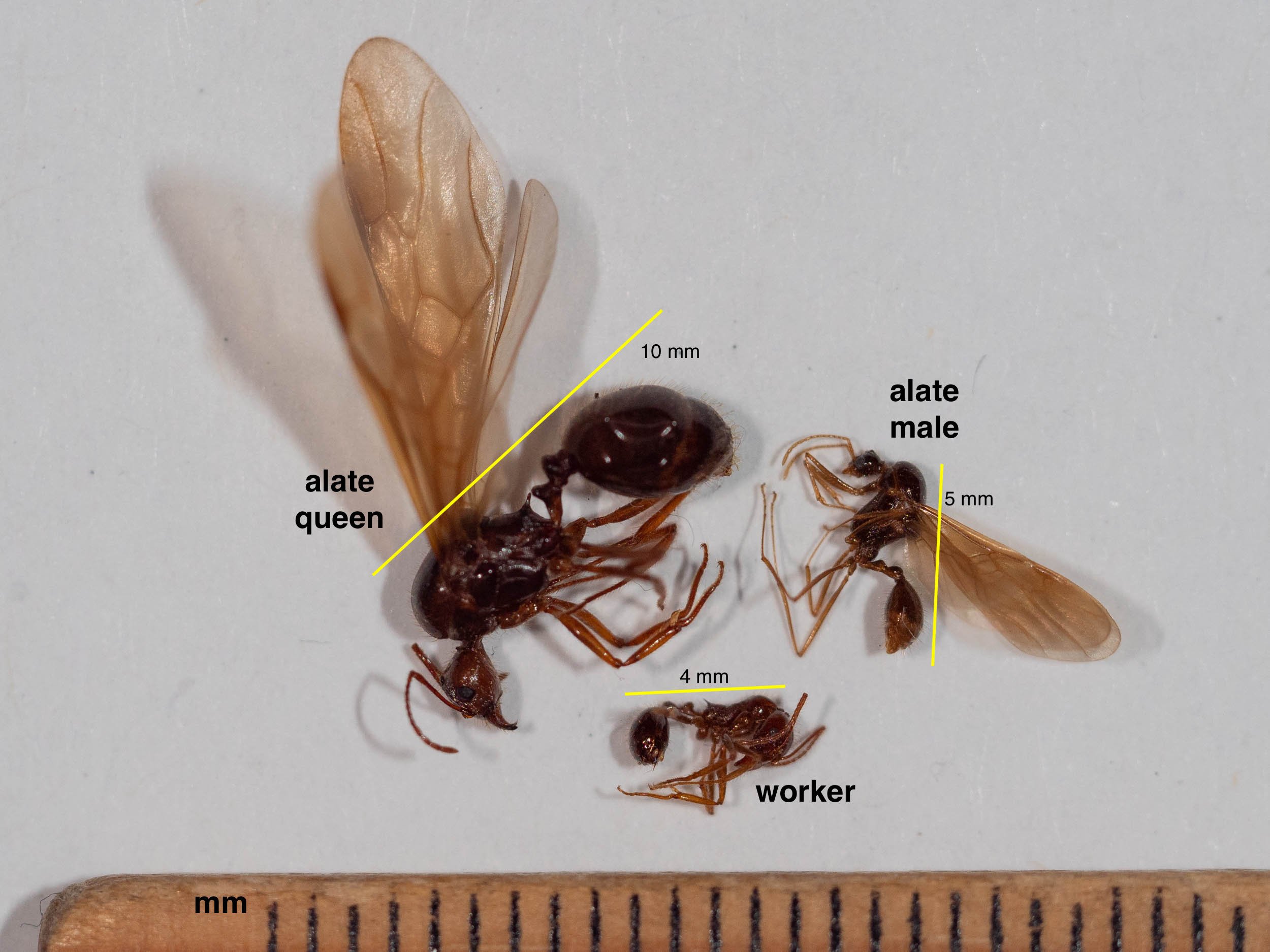
Aphaenogaster longiceps castes differ greatly in morphology as well as size. Identification keys are typically based on worker ants.
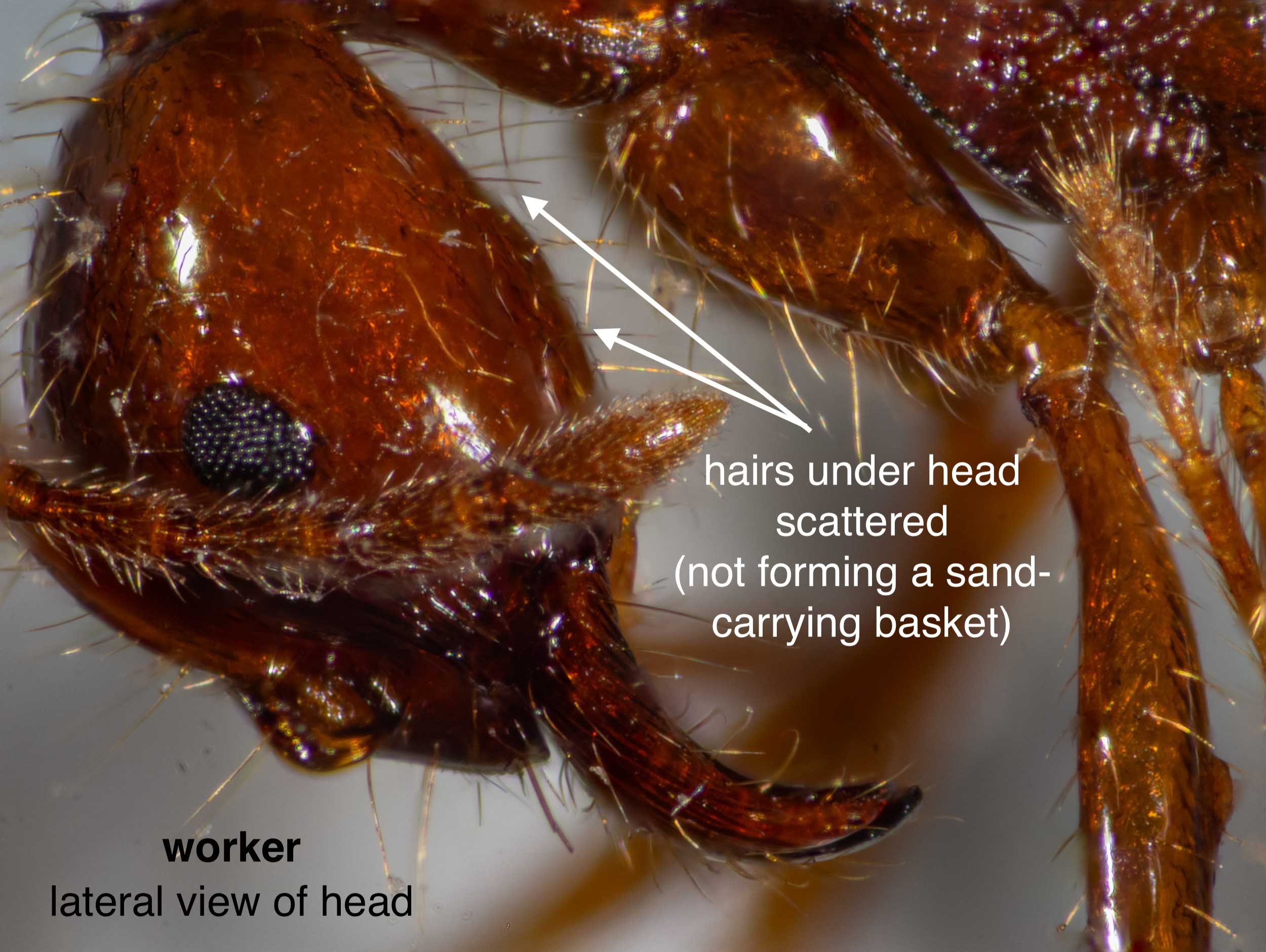
Features used in identification key (Shattuck 2008):
1. The distribution of hairs under the head rule out three of the eight Australian species of Aphaenogaster.
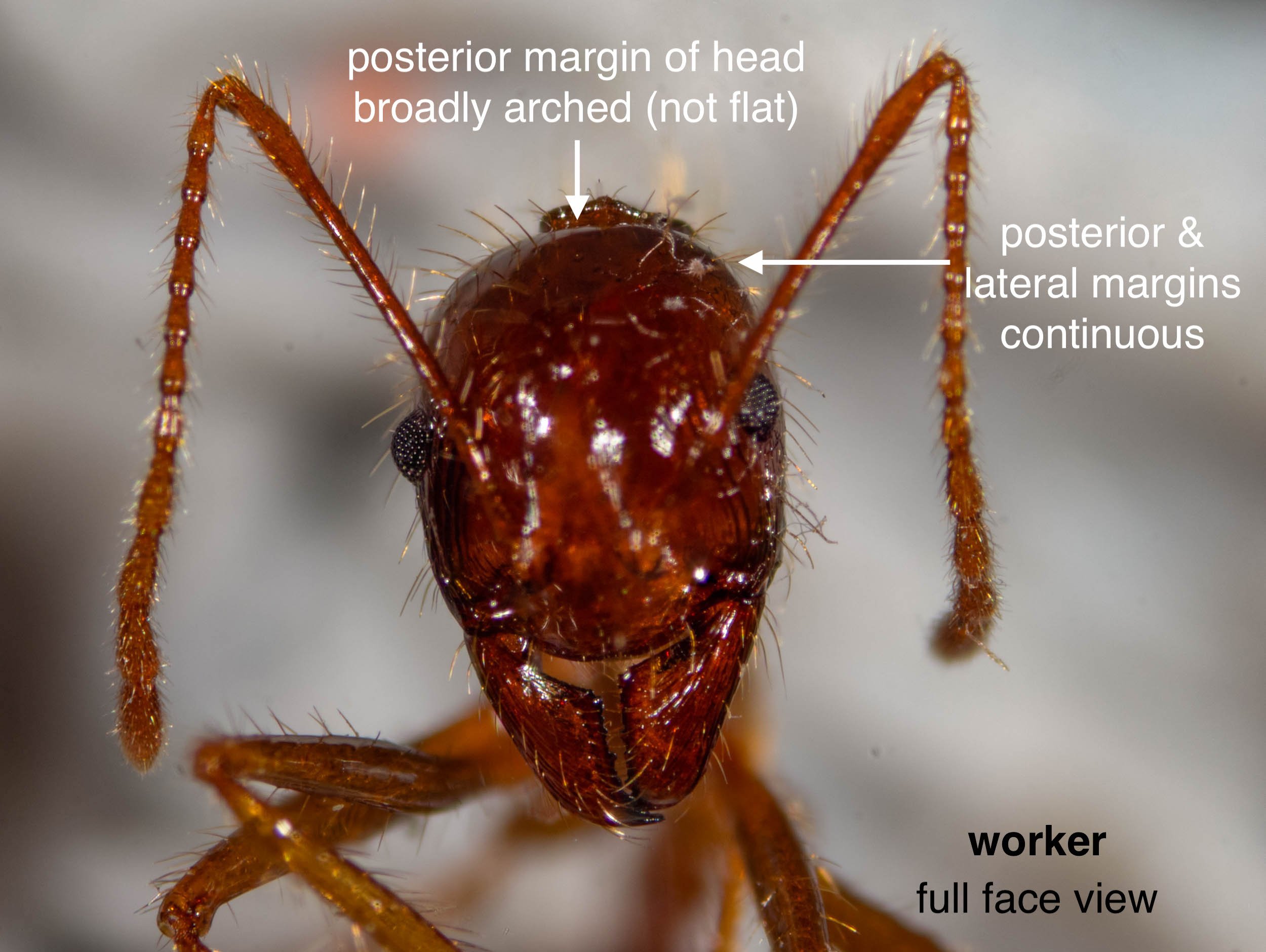
Features used in identification key (Shattuck 2008):
2. The shape of the head, when viewed face on, further narrows the list of candidates to just three … A. longiceps, A. kimberleyensis and A. barbara.

Features used in identification key (Shattuck 2008):
3. Finally, the shape of the propodeal spine confirms the identity … Aphaenogaster longiceps. Blunt hairs are also consistent, but this feature is more difficult to see.
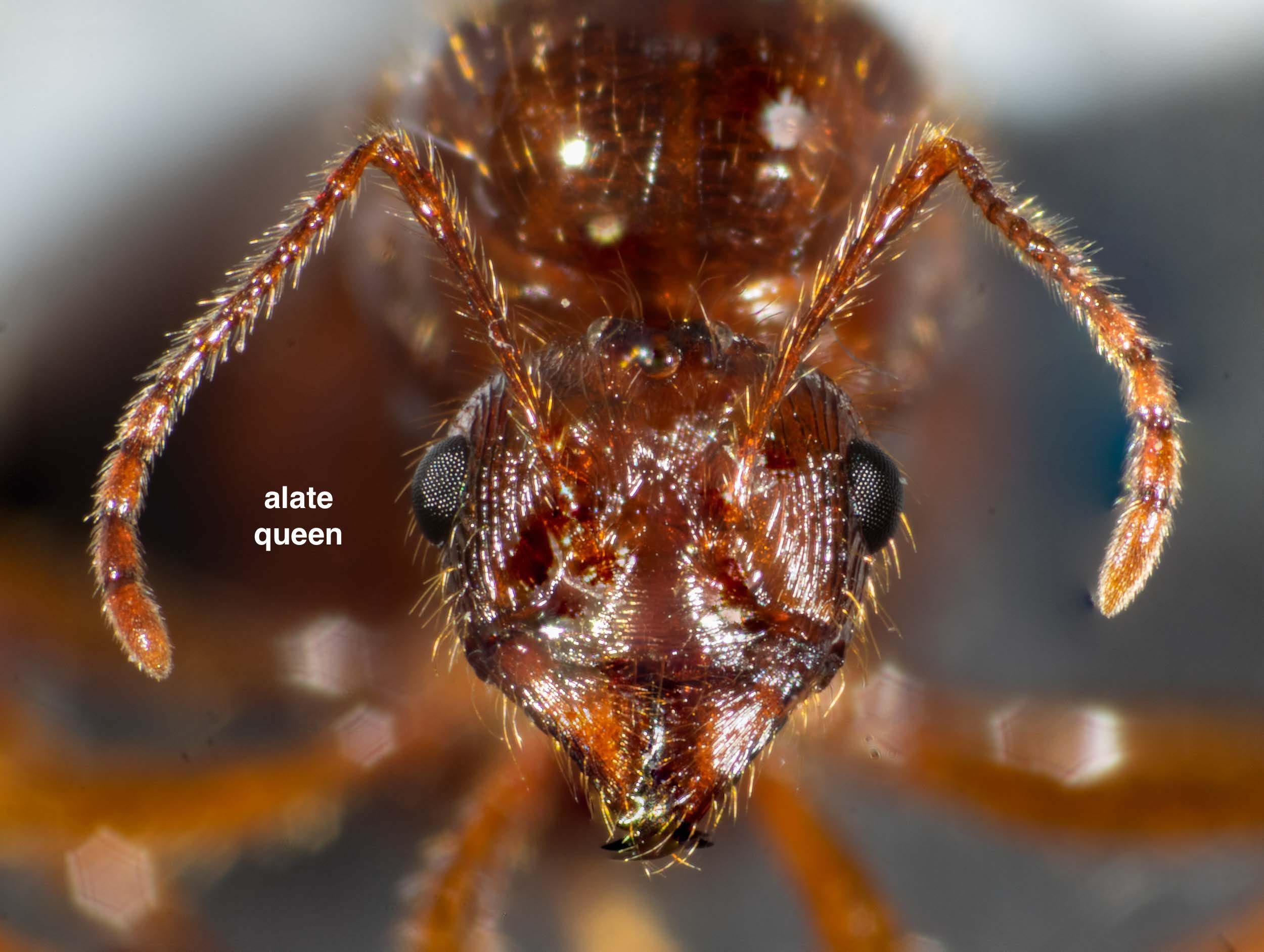
Queen (with wings removed), showing scoop-like mandibles … perhaps a modification for digging (?)
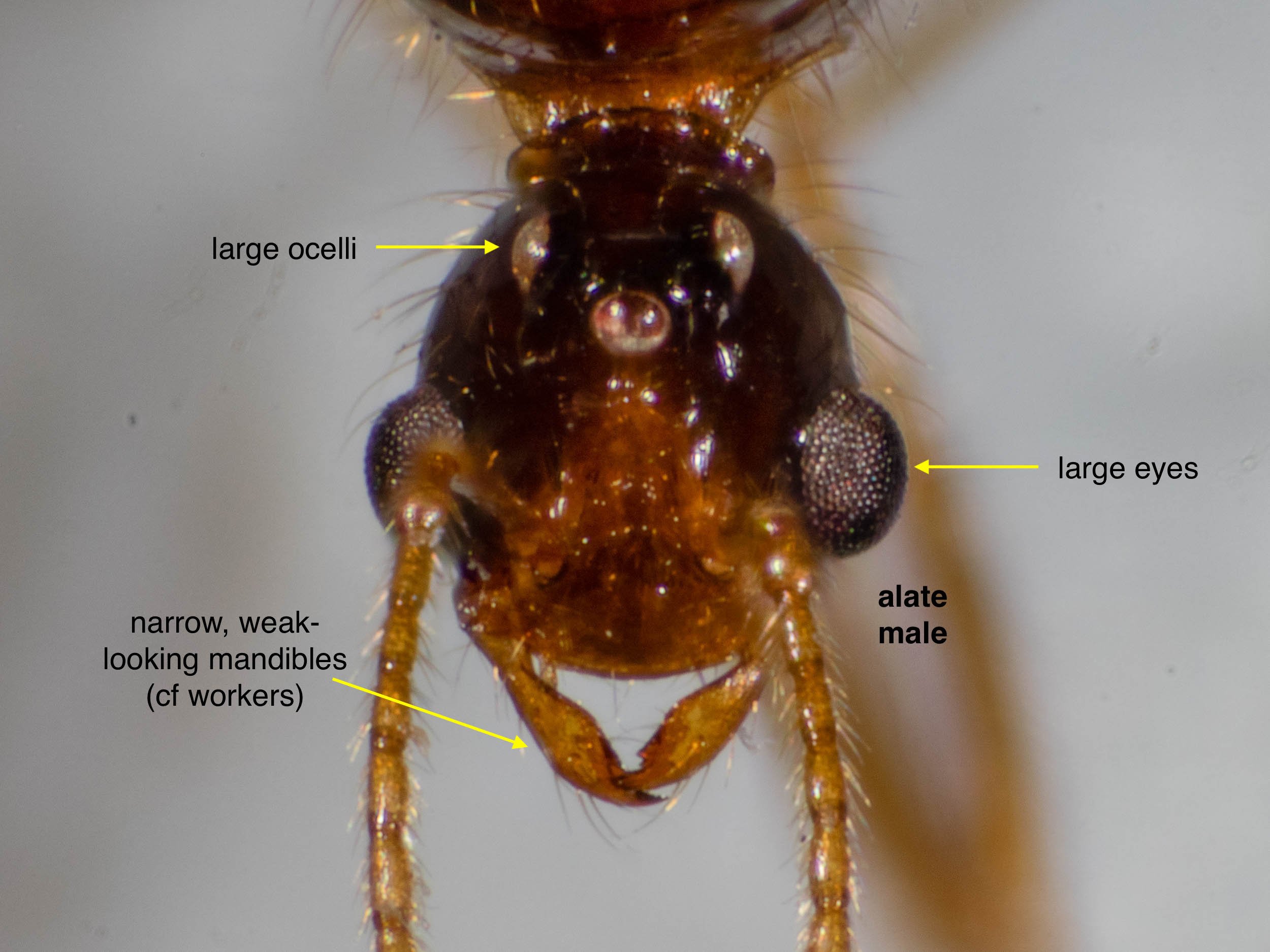
Alate male, with small mandibles but enlarged ocelli and compound eyes. Note that only the alates (winged reproductives) have ocelli, which are used for orientation and horizon detection during flight. The flightless workers have no need of them.
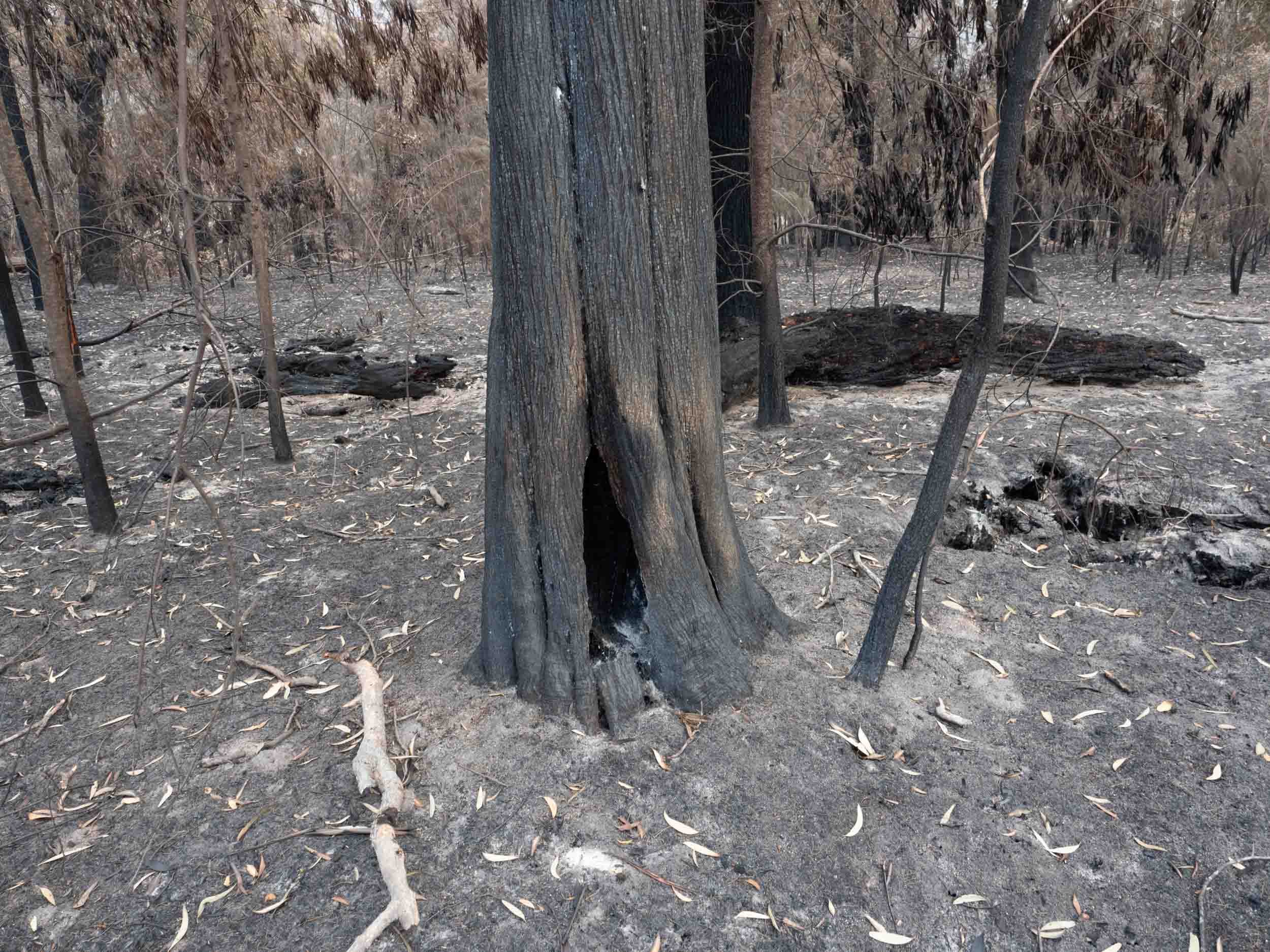
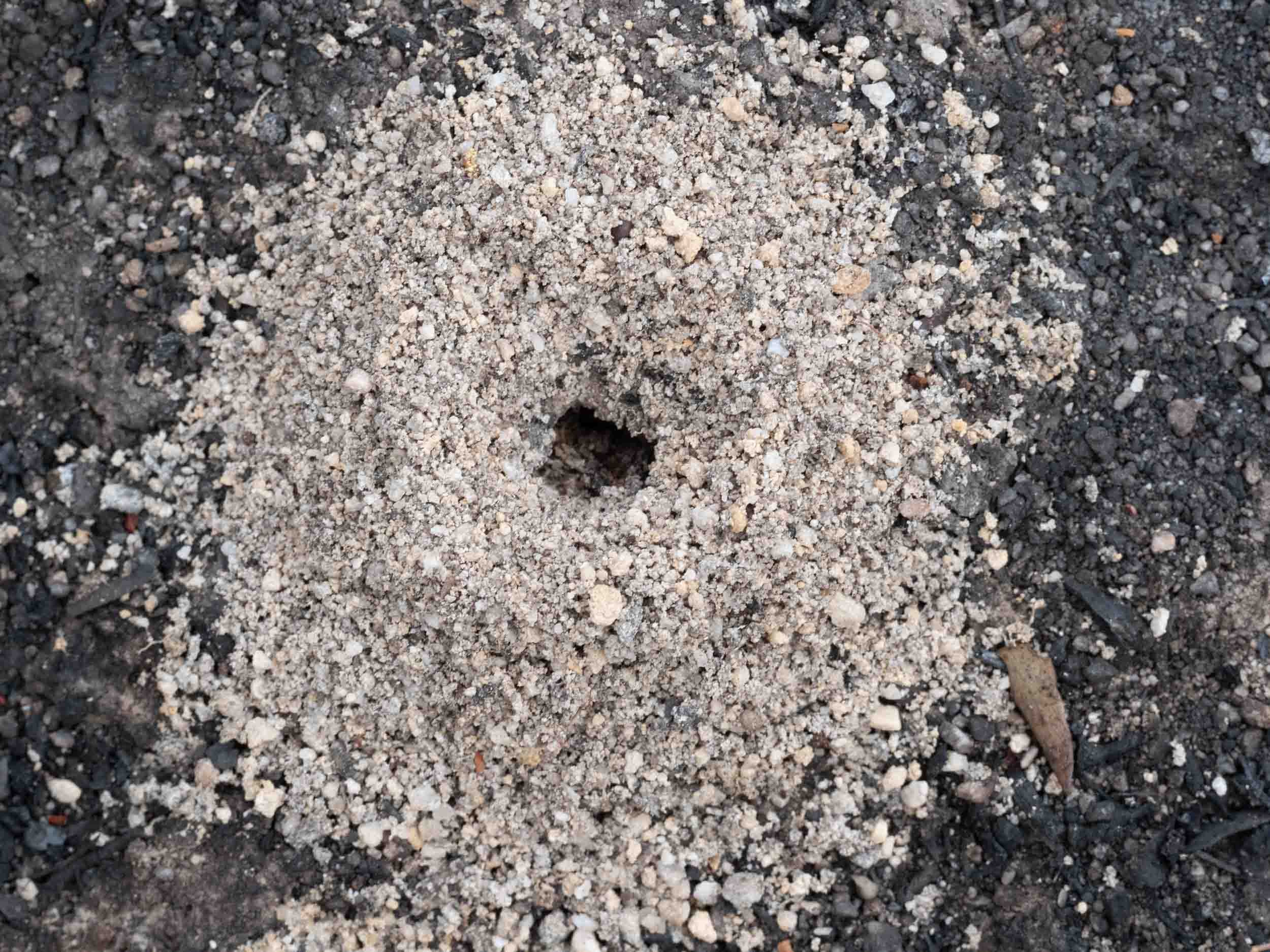
The distinctive funnel-shaped nest opening of Aphaenogaster longiceps … just one week after a high-intensity bushfire.
(11/1/2020 7:57)
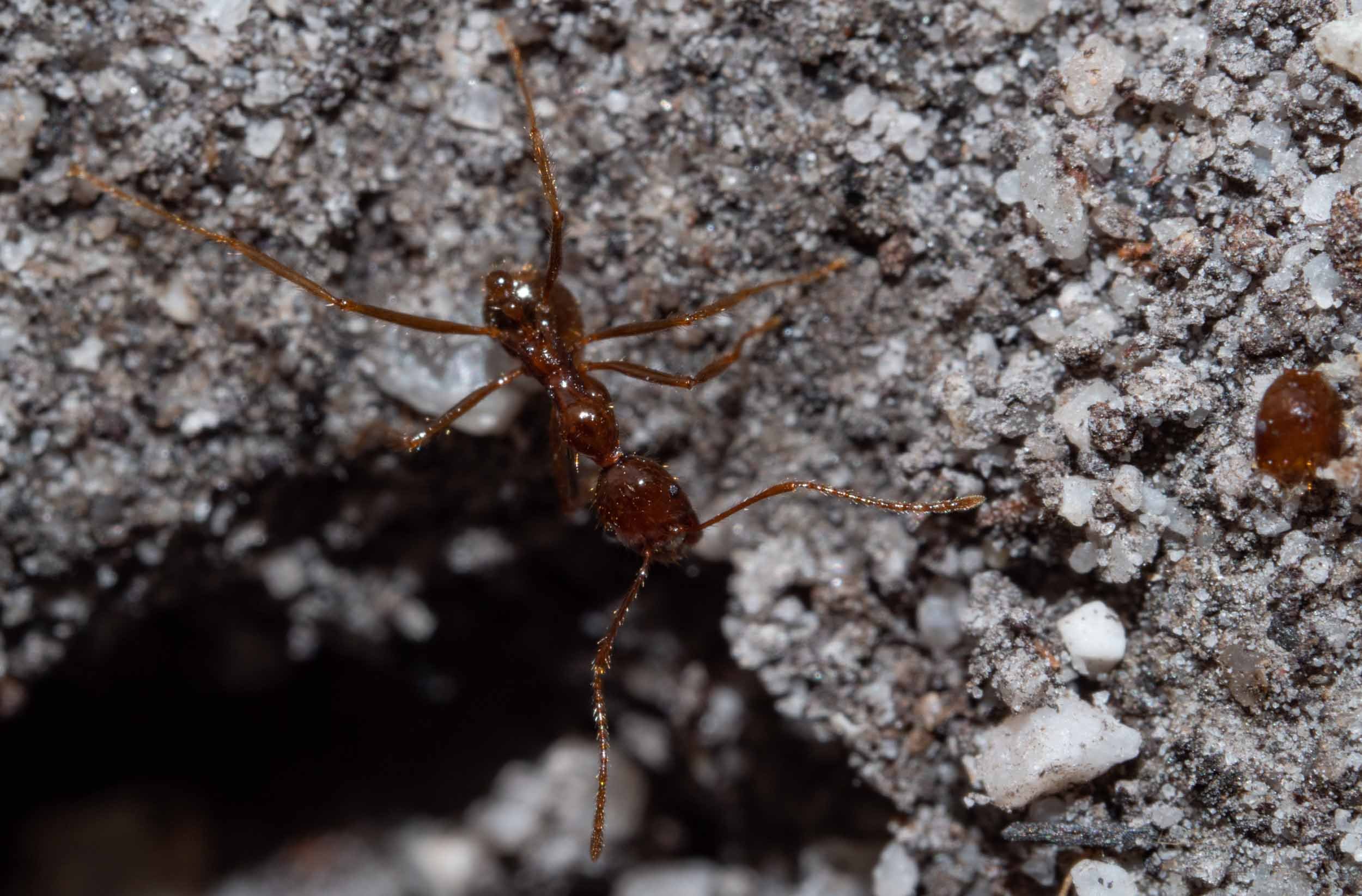
Aphaenogaster longiceps worker at nest entrance, within one month of fire event.
(27/1/2020 15:09)
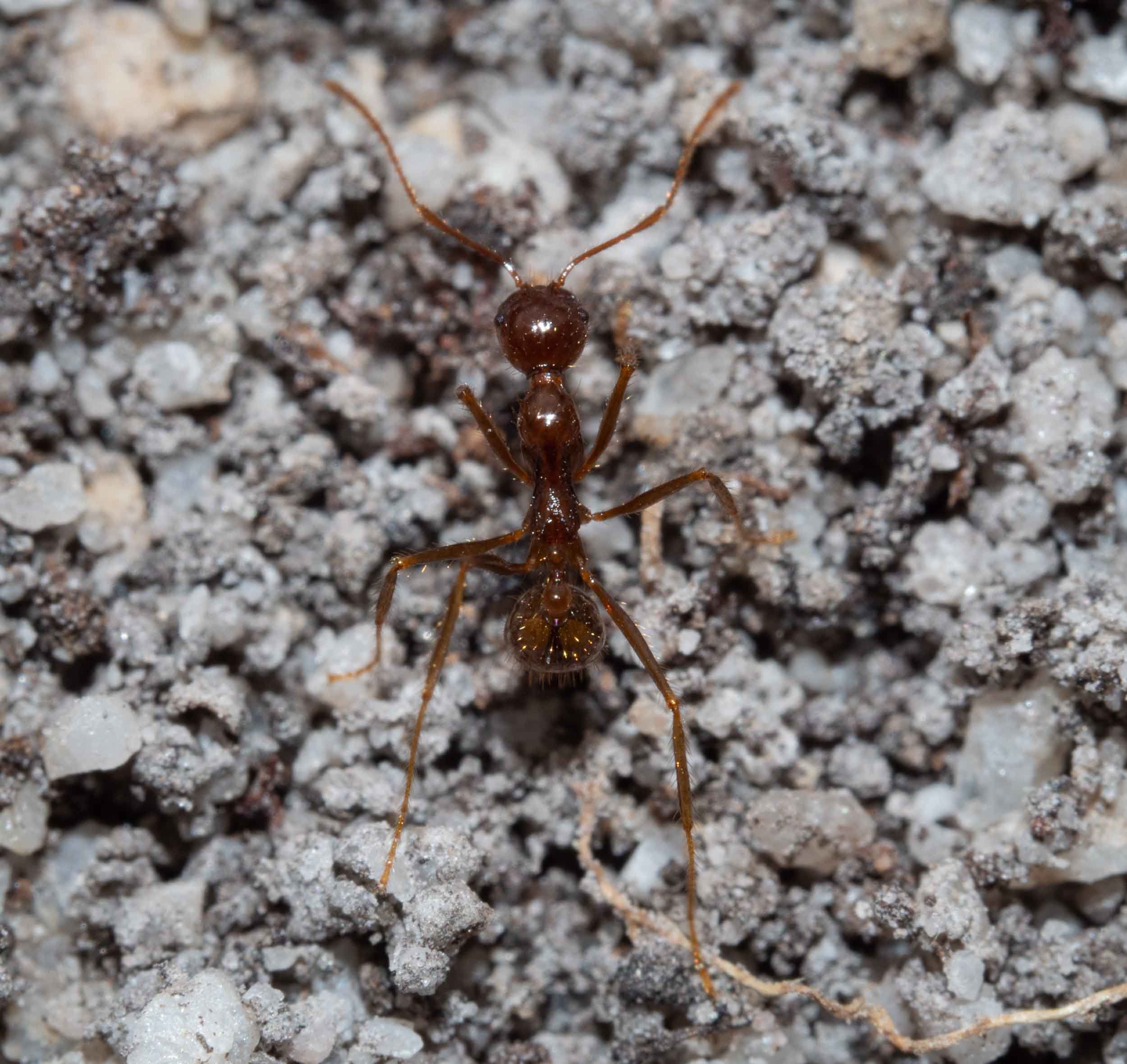
Aphaenogaster longiceps worker.
(27/1/2020 15:09)
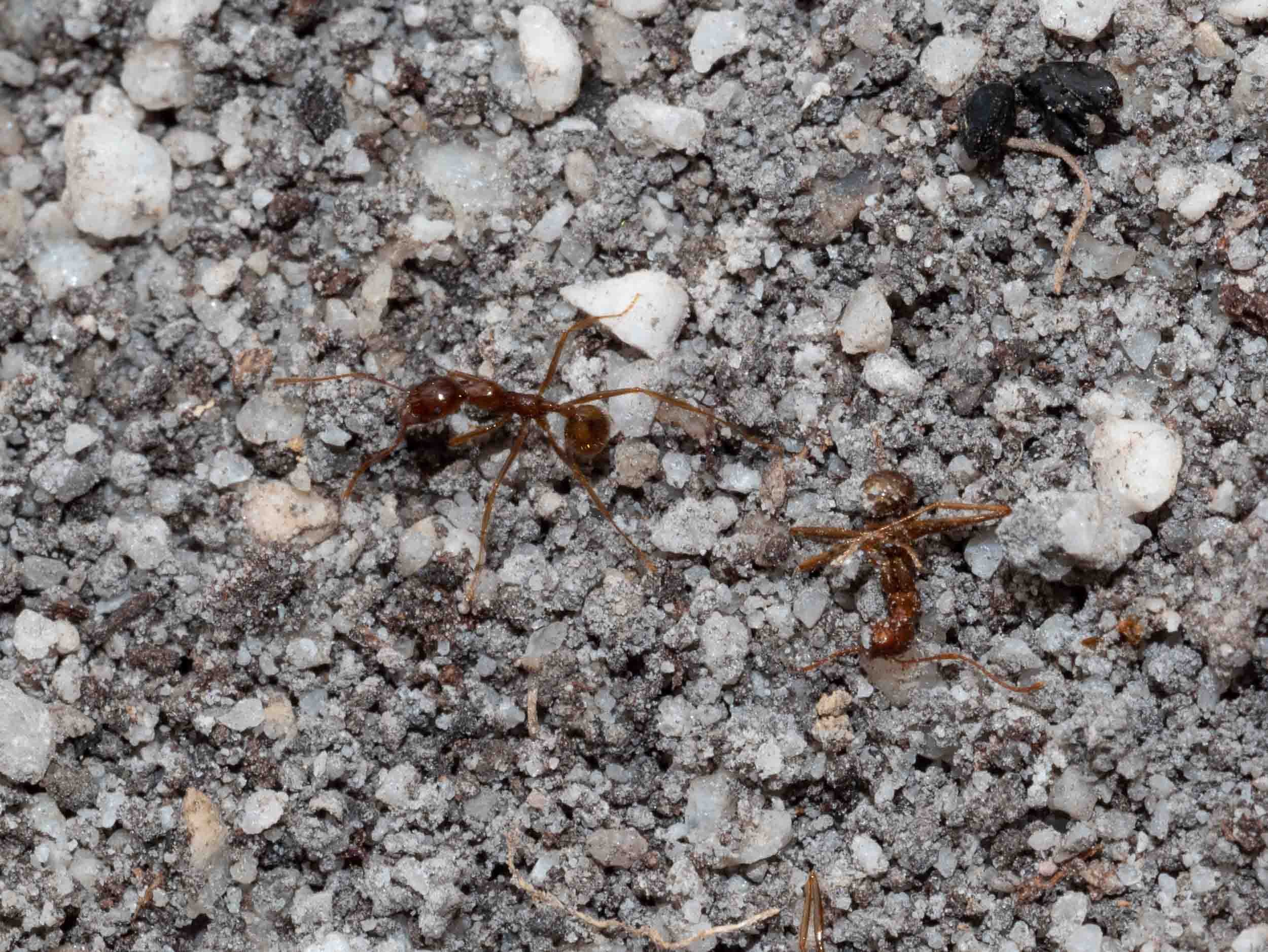
Aphaenogaster longiceps worker discards the body of a dead sibling outside the nest.
(27/1/2020 15:08)
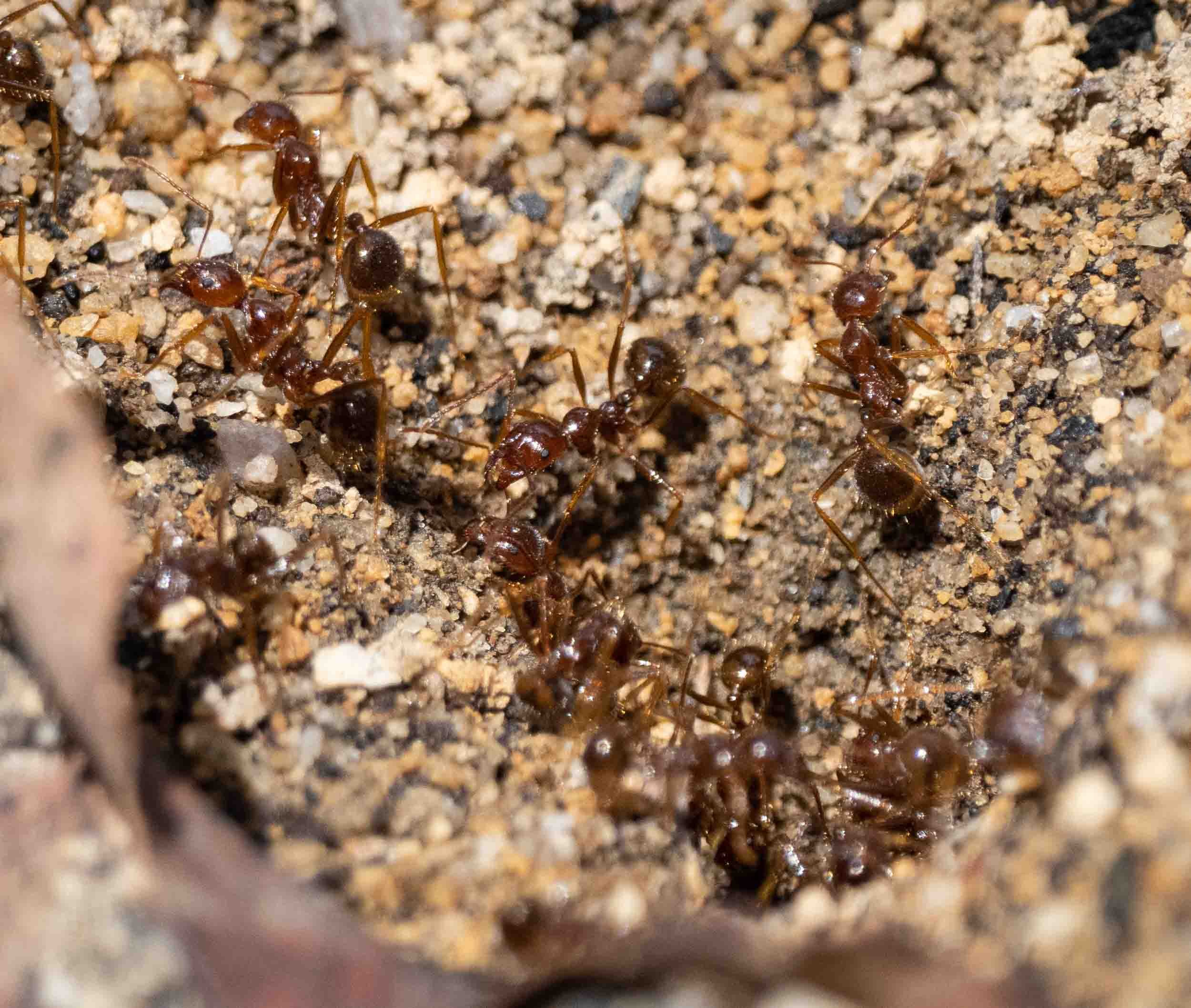
Agitated workers spill from nest in response to invading beetles.
11am, 6/11/2021
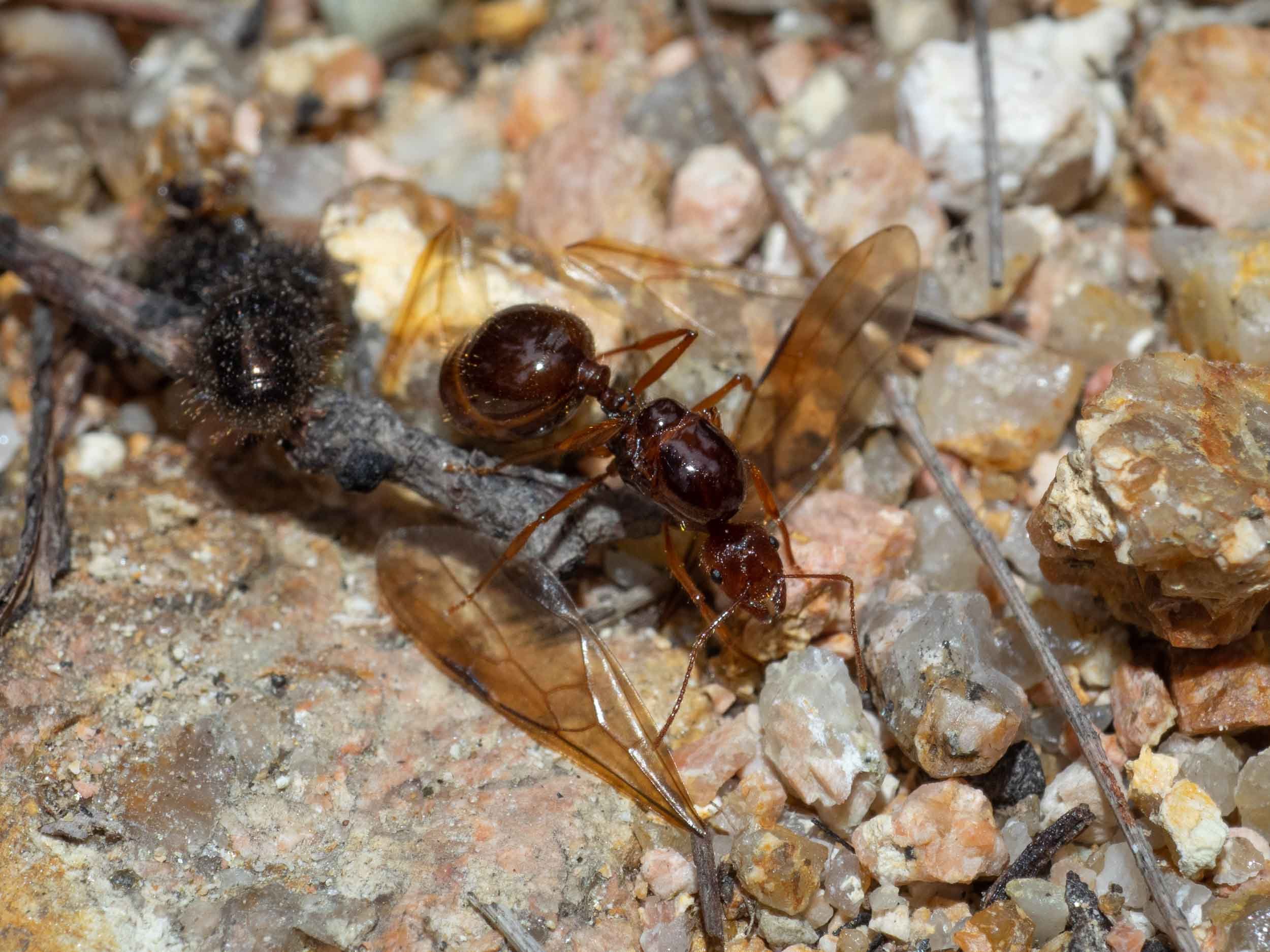
Queen, newly emerged from the nest and having just removed all four of her wings.
6pm, 18/10/21
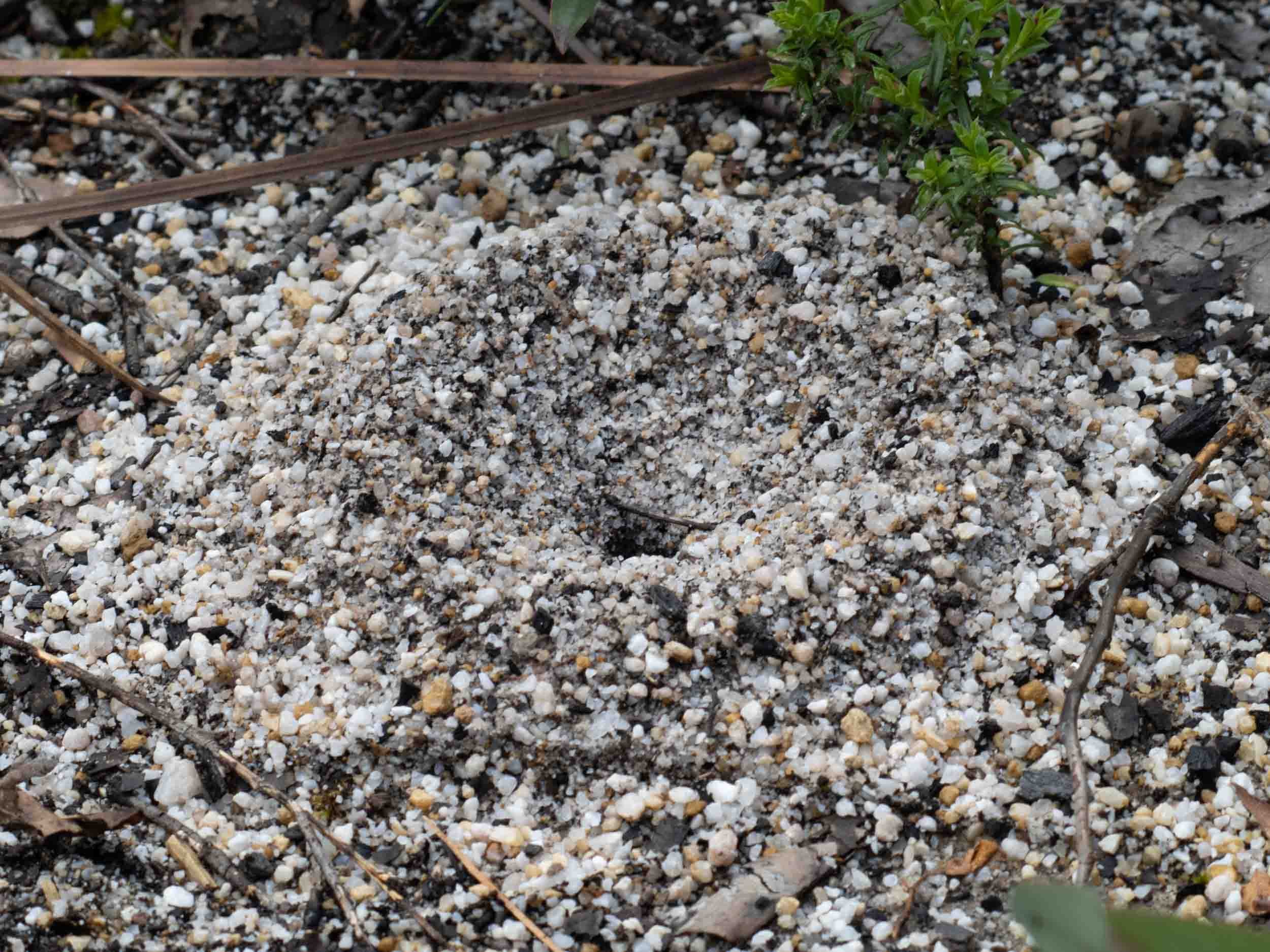
Funnel-shaped mound surrounding opening to Aphaenogaster longiceps nest.
11am, 22/10/21
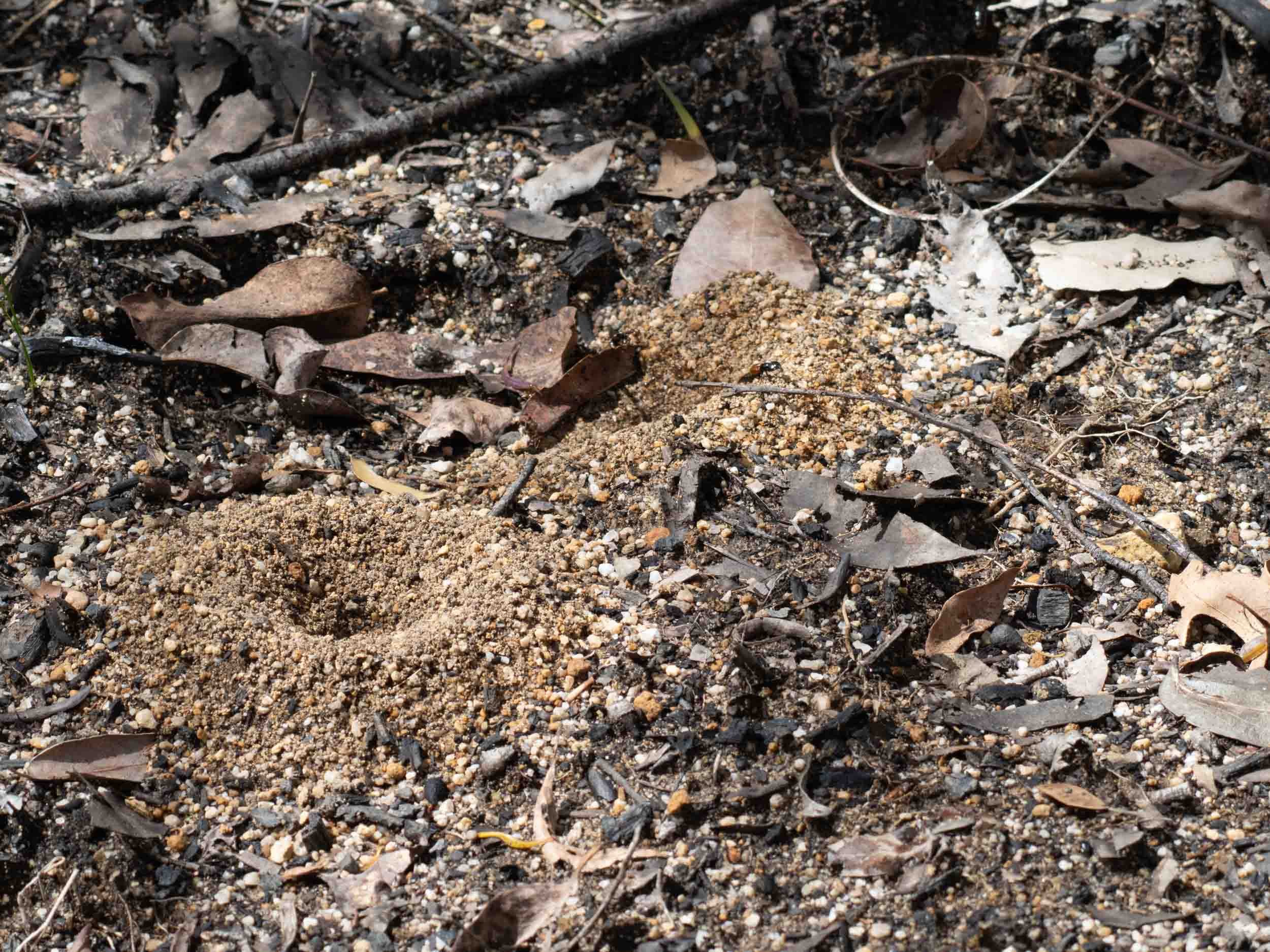
Two adjacent nest entrances, almost certainly belonging to the same colony. The sandy soil of our home forest is well-suited to this species. They tend to avoid rocky or wet areas.
11am, 6/10/21
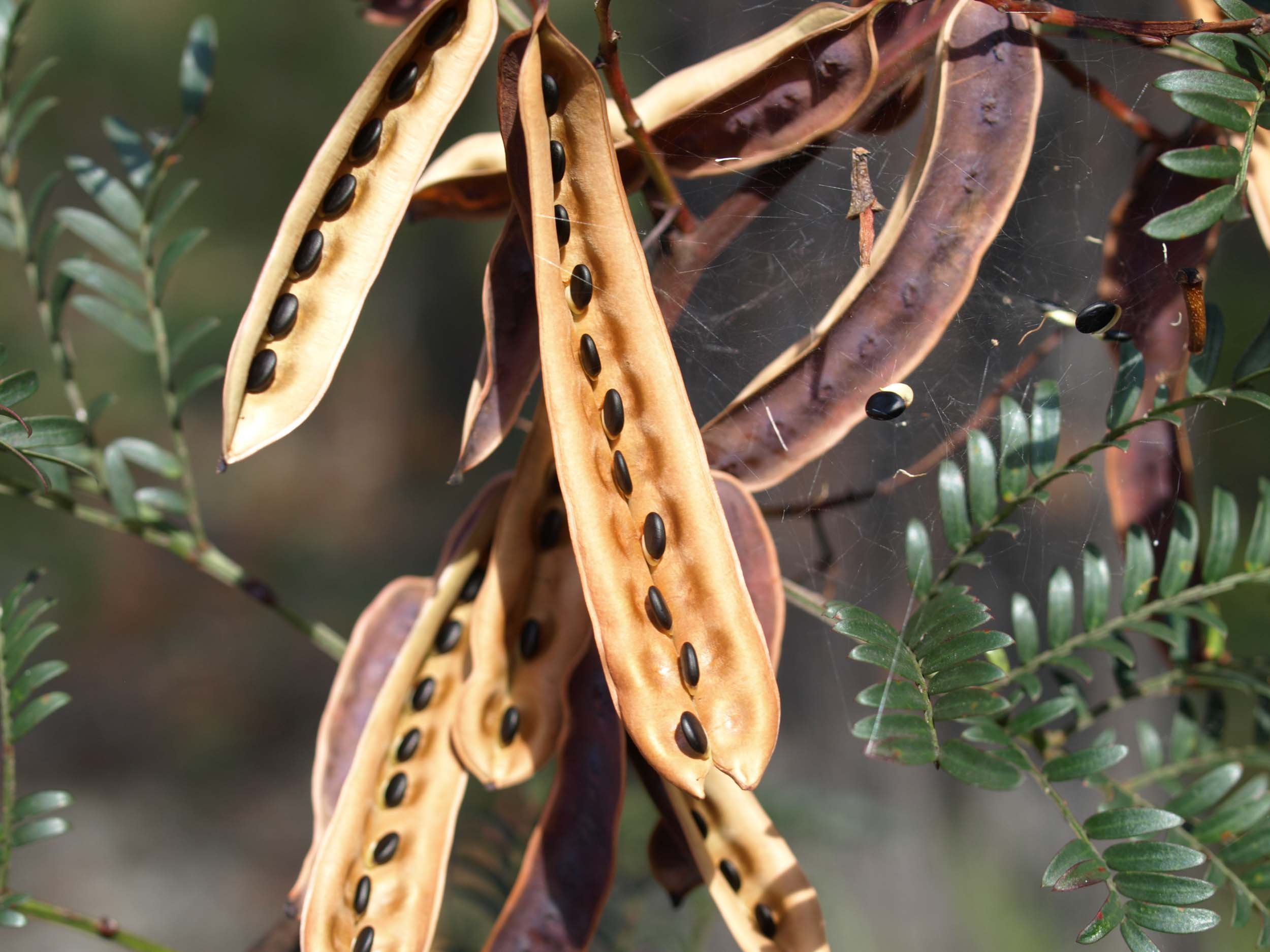
Mature, split pods of Acacia terminalis
December, 2011
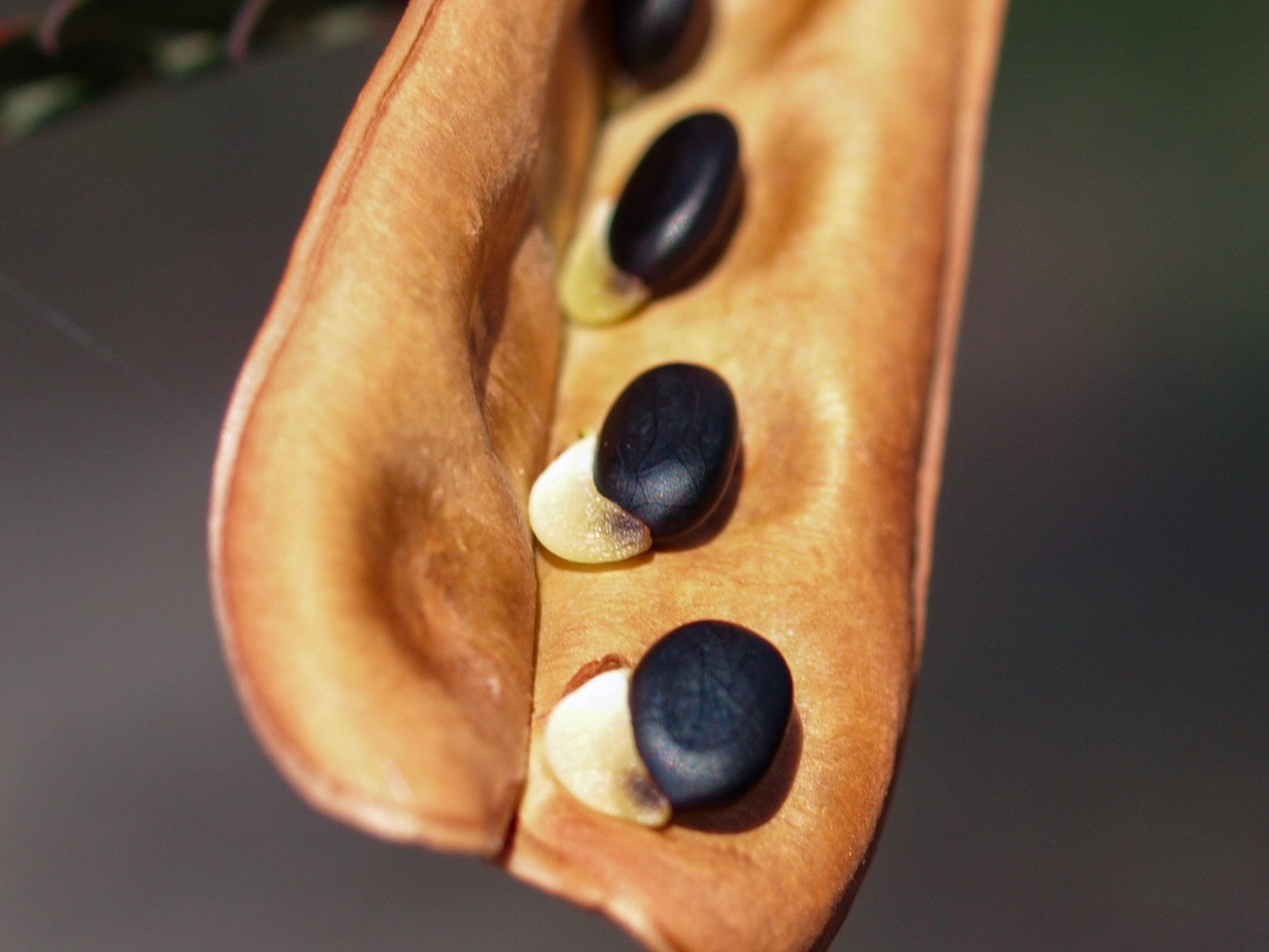
The smooth, black seeds of Acacia terminalis, with their prominent, creamy-yellow elaiosomes. These seeds are ready to fall to the ground when the pods are shaken by wind.
December, 2011

The ground was spongy due, in large part, to the activity of the ants.
11/1/20
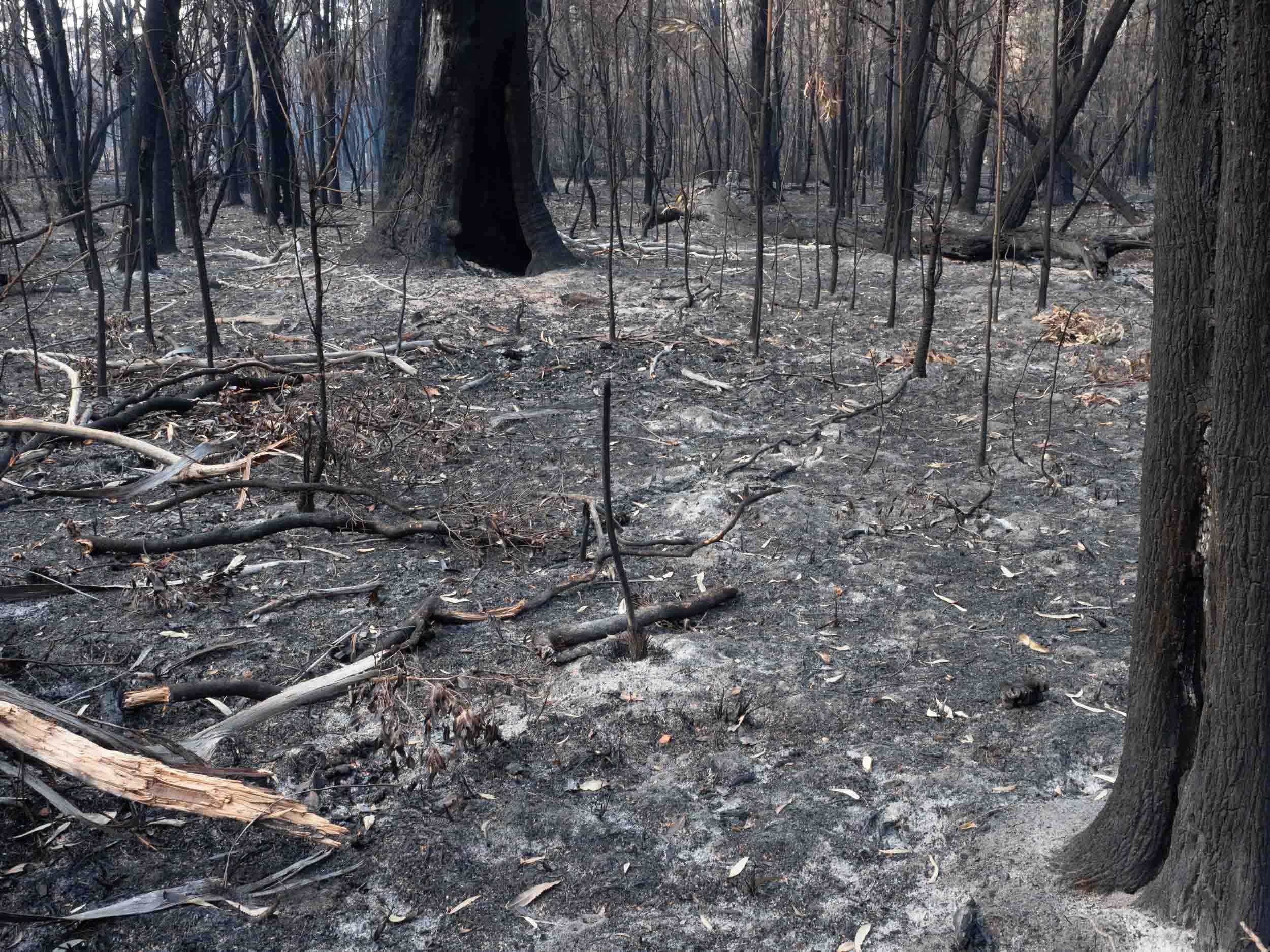
One week post-fire, trees still smouldering, and already the black ash shows the tell-tale pale circles of ant mounds.
(11/1/2020)
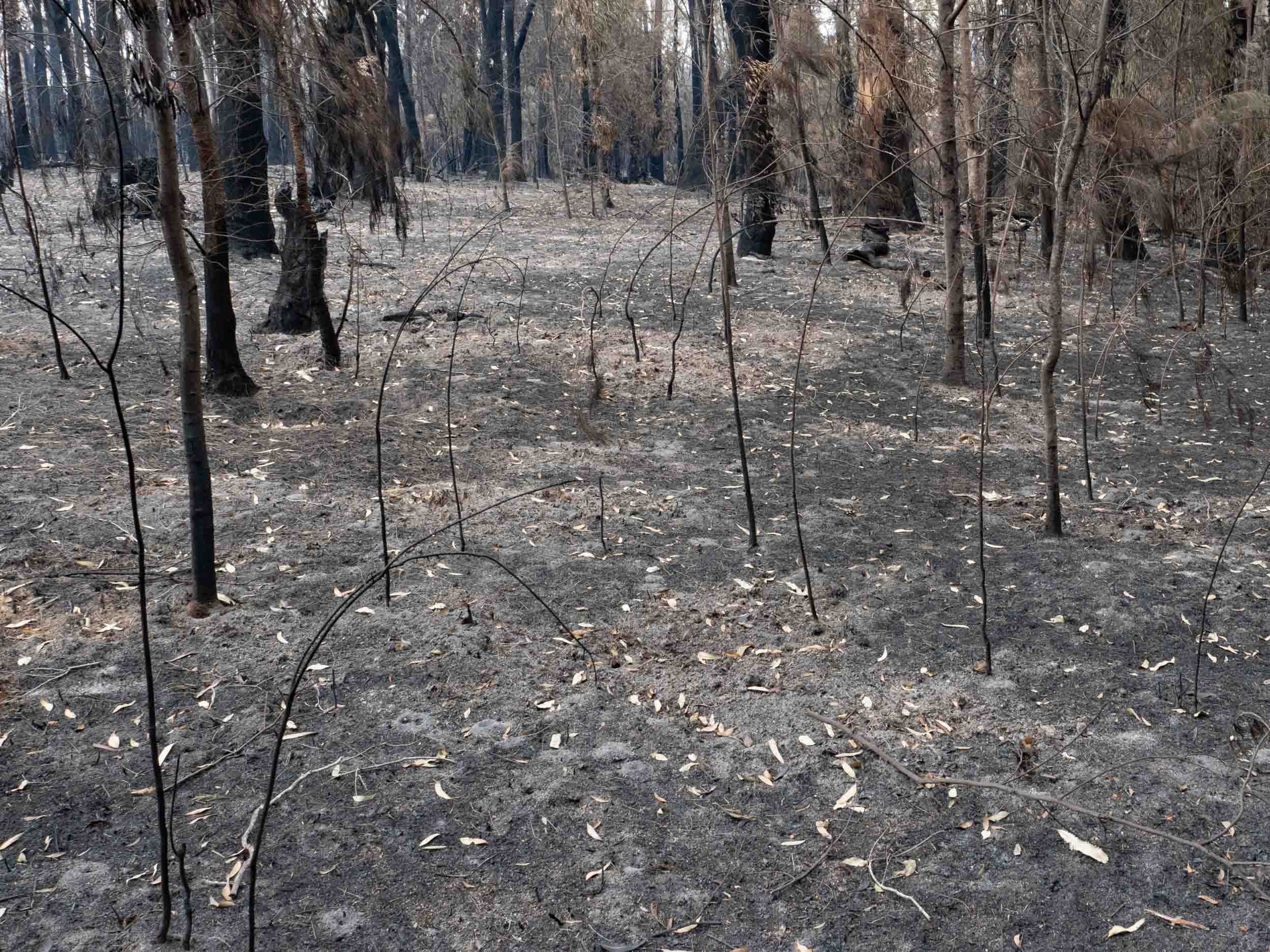
The ground was spongy due, in large part, to the activity of ants.
(11/1/2020)
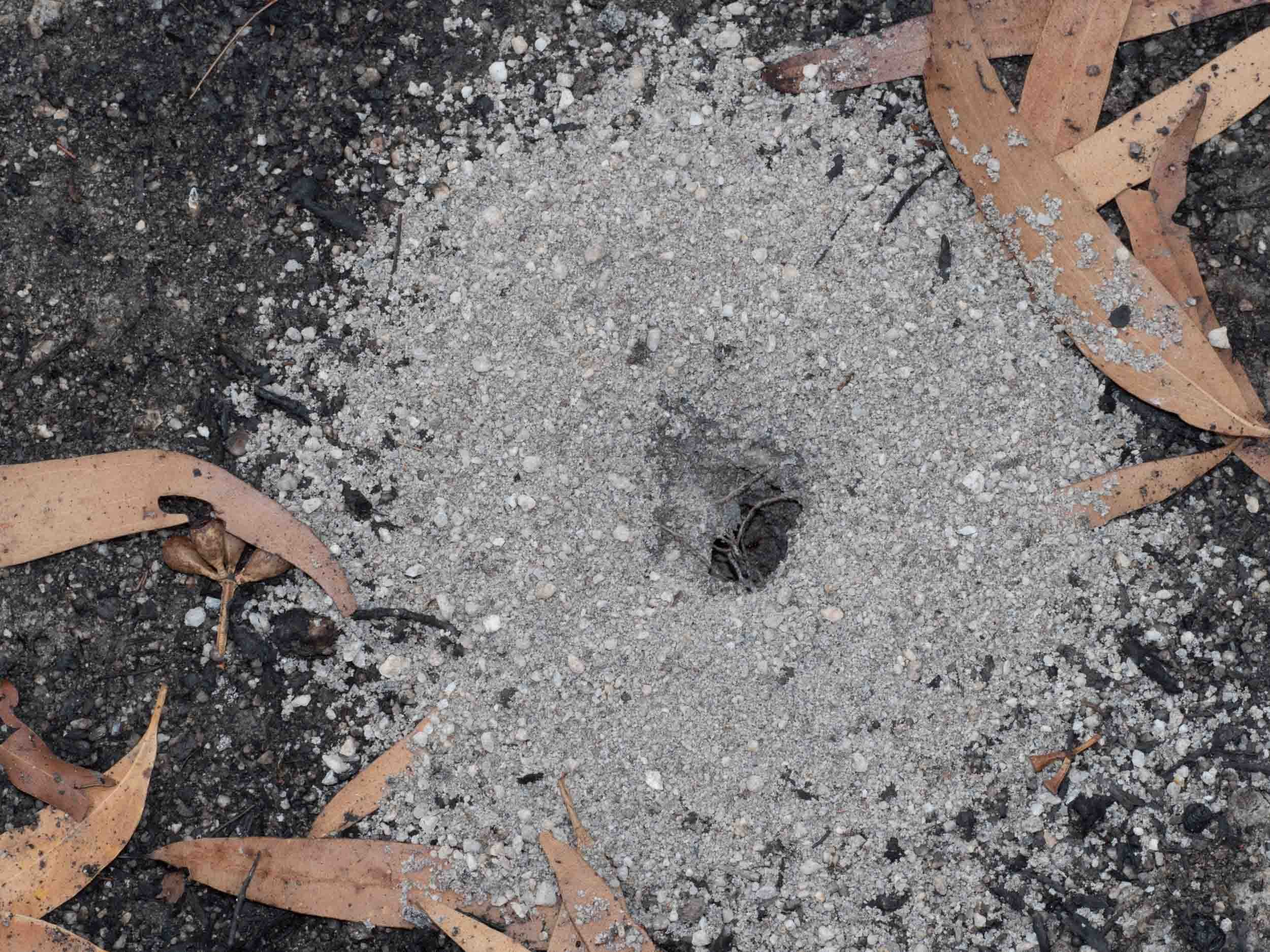
As unburnt soil from below ground is removed from the growing tunnels, surrounding ash and char is progressively buried.
(27/1/2020)
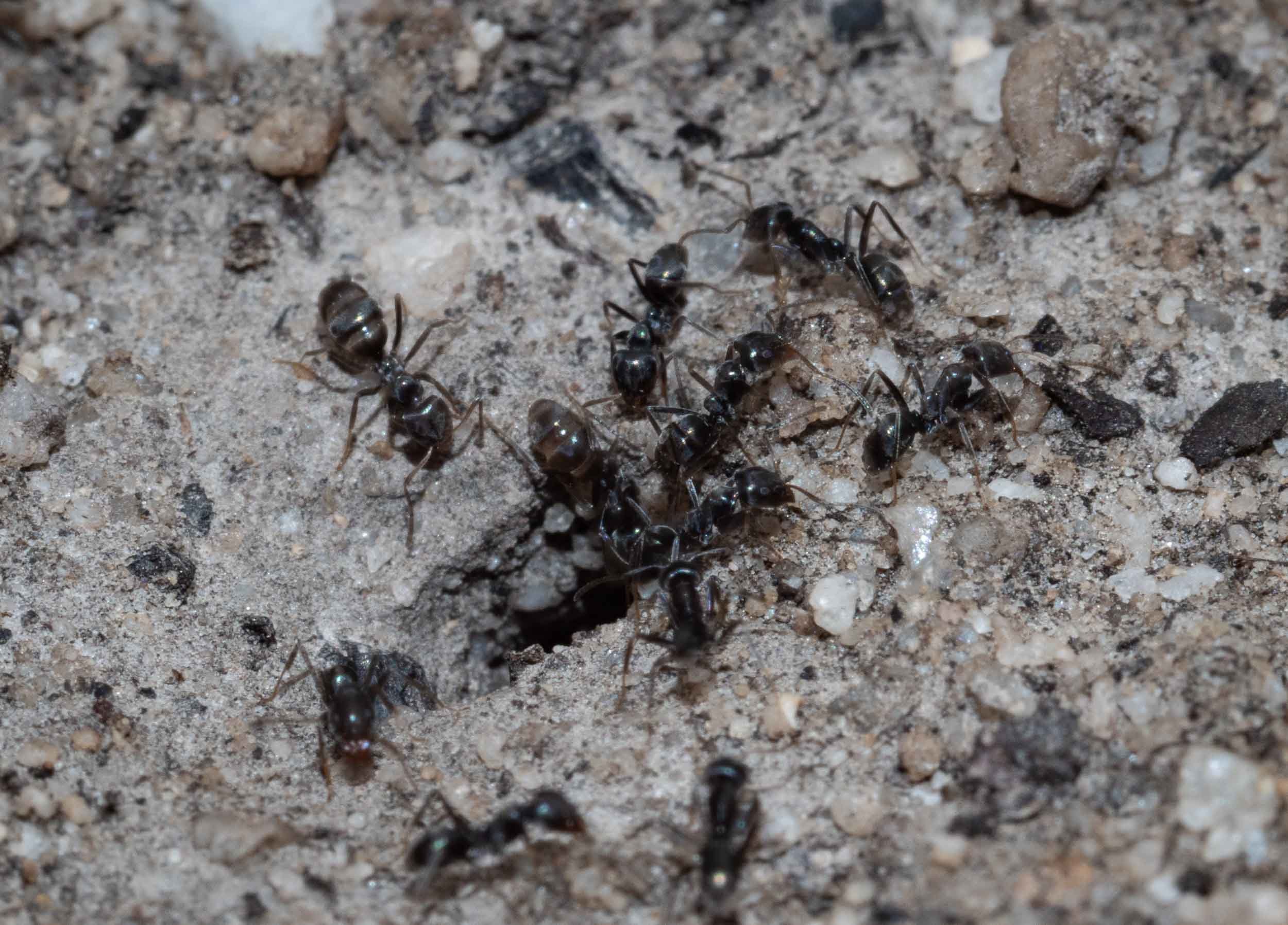
Other ant species were also active soon after the fire. Investigation of this black species is currently on my to-do list.
(27/1/2020)
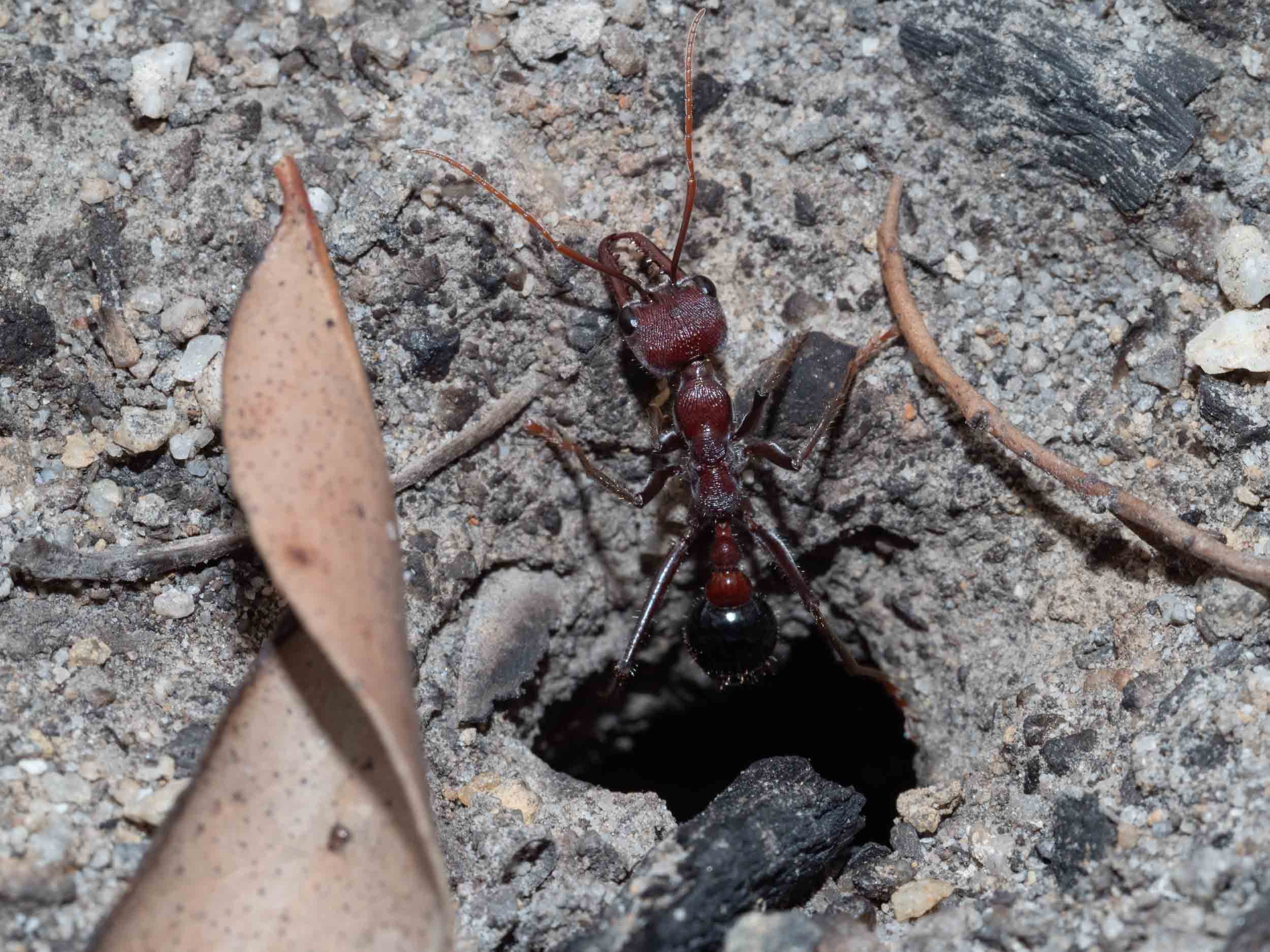
It wasn’t just the small ants that survived the fire underground. Red Bull Ants (Myrmecia simillima) made an early reappearance.
(27/1/2020)
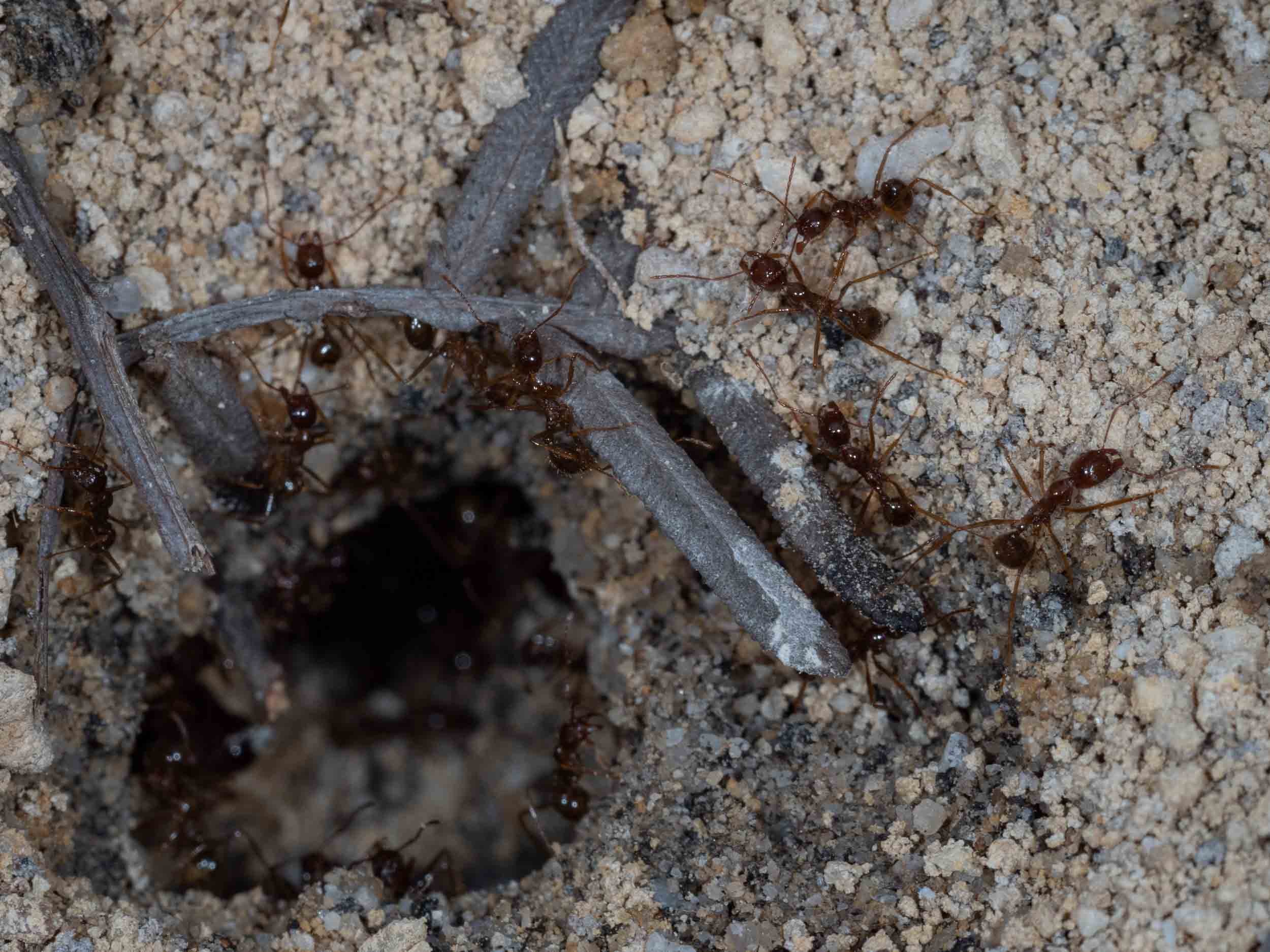
Worker activity at a nest entrance.
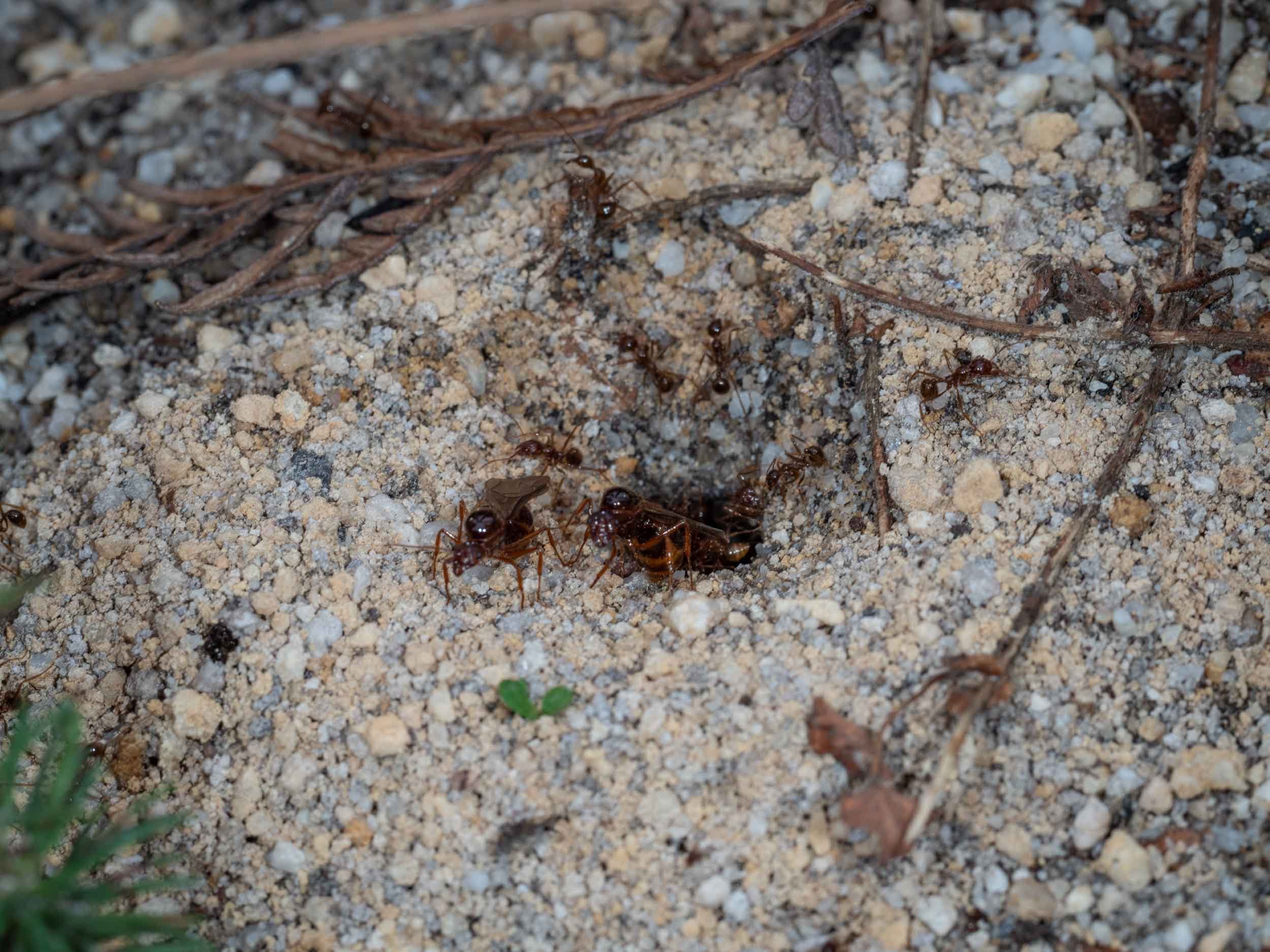
Winged females emerge amidst vigilant, agitated workers.
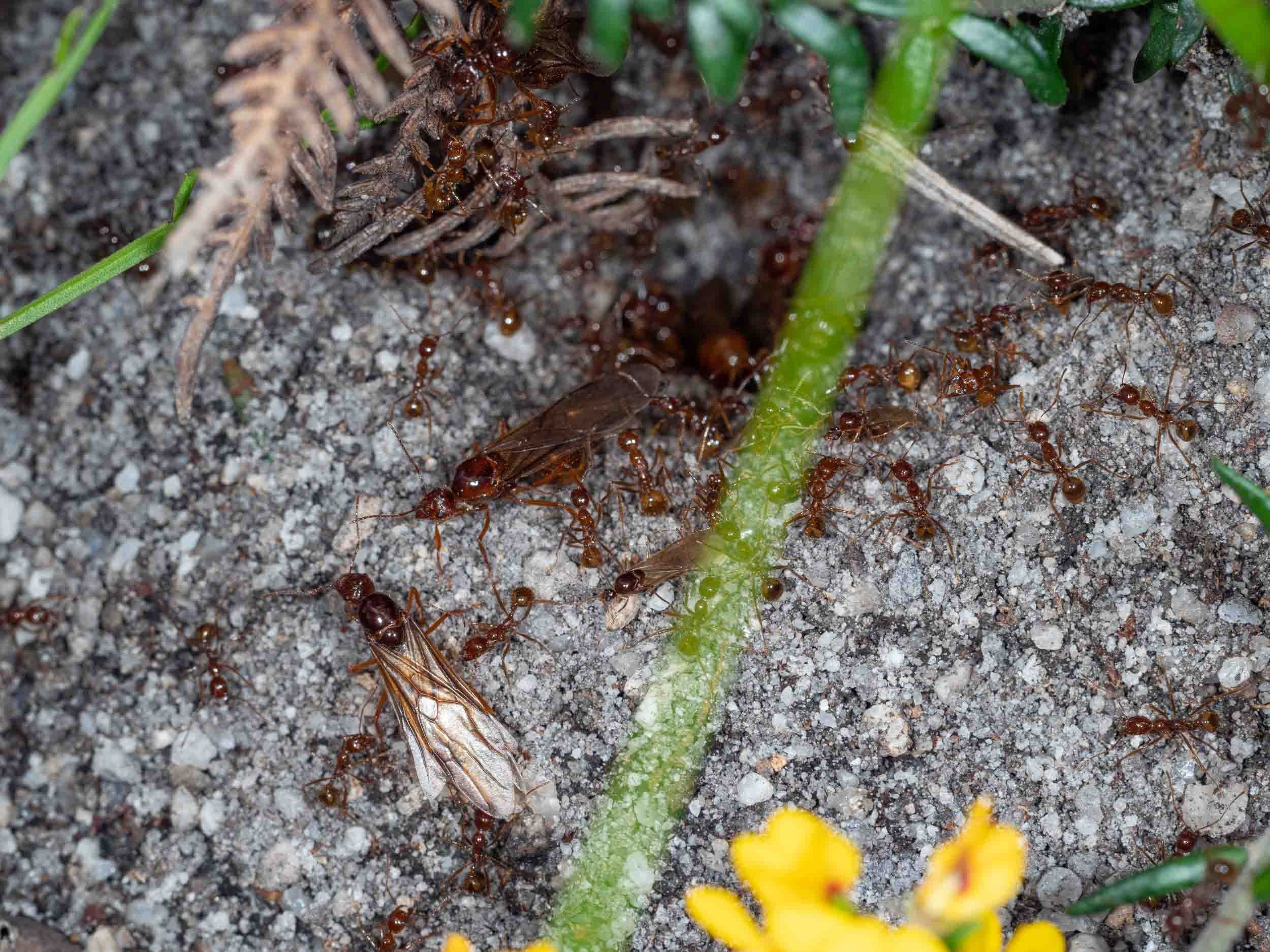
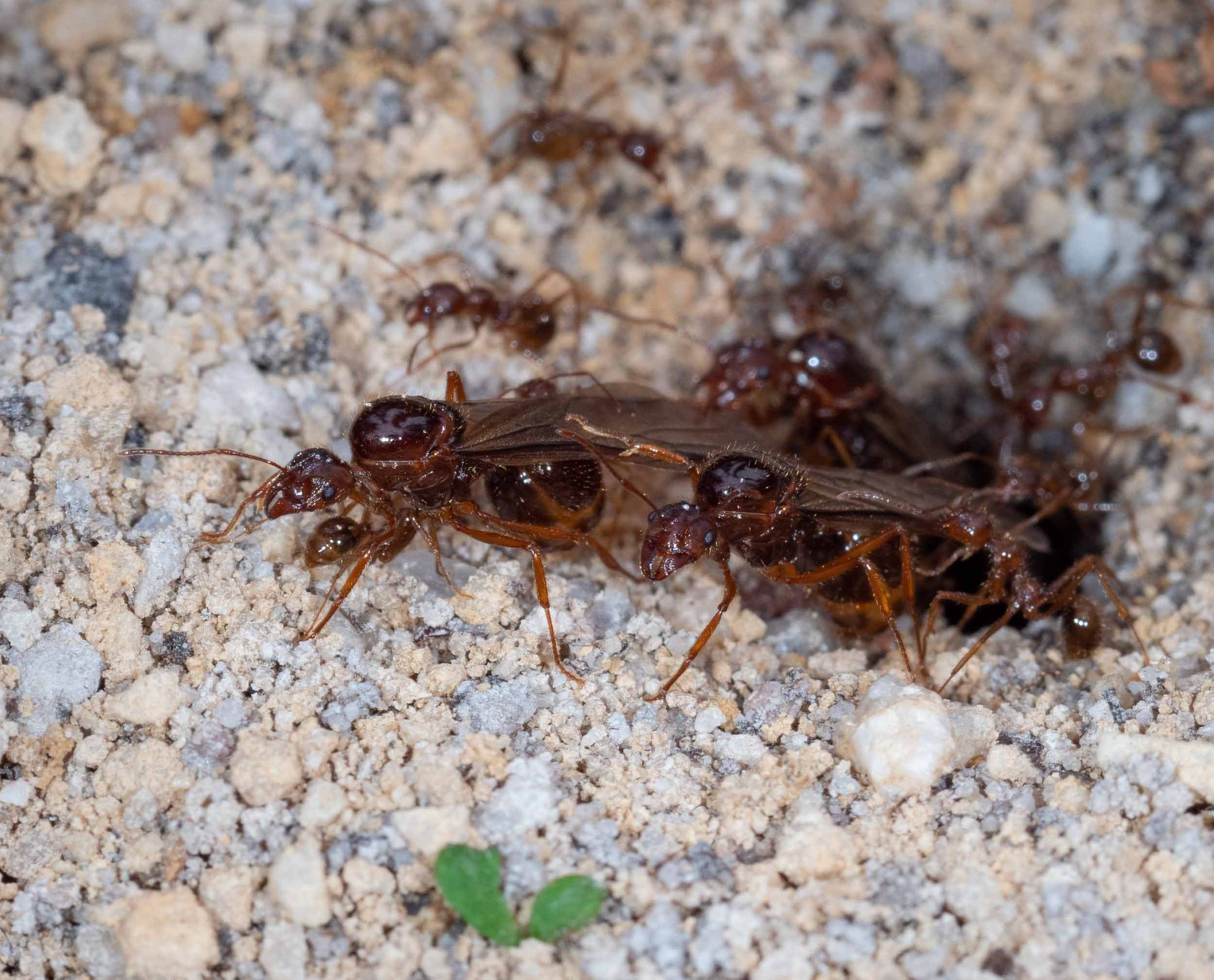
The large, winged females are sisters of the workers. The precise trigger that led to their development into such large, winged adults is a matter of debate and ongoing research. In some species, temperature and/or food type during the larval stage plays a role.
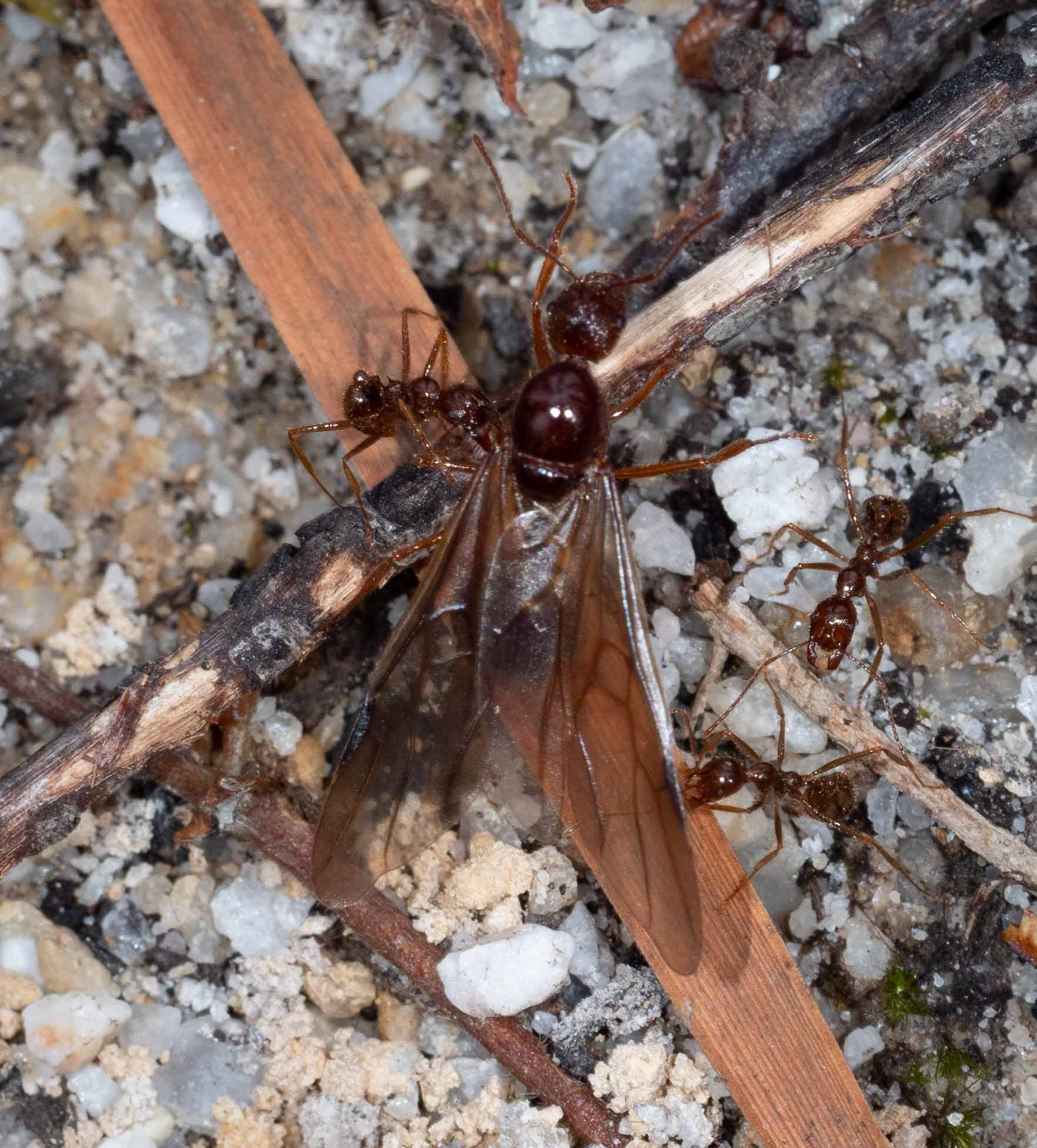
Although not apparently harming the virgin queen, the workers were repeatedly touching her with their antennae, mandibles and legs.
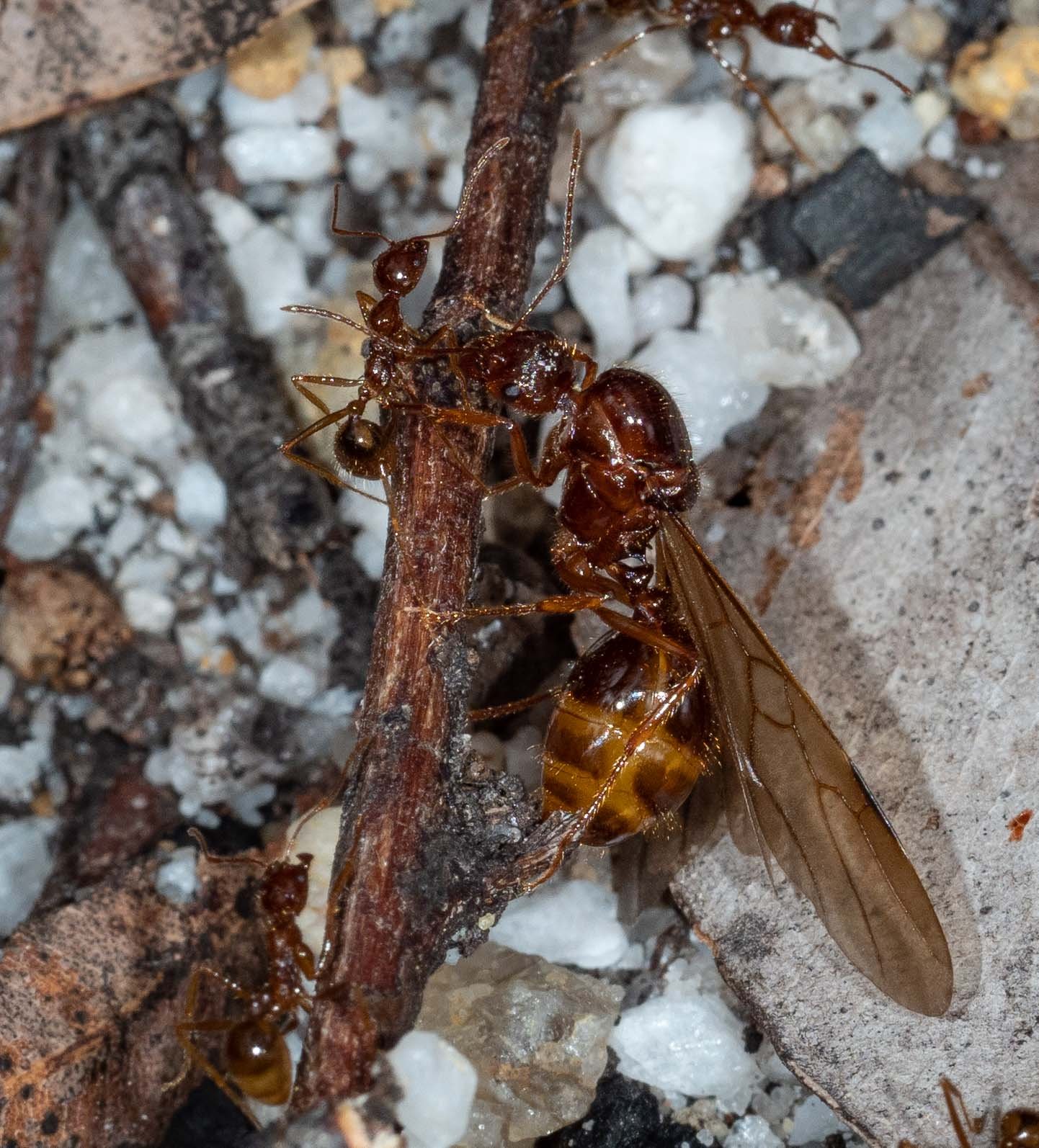
Workers appear to lead a queen along a safe path, away from the nest opening.
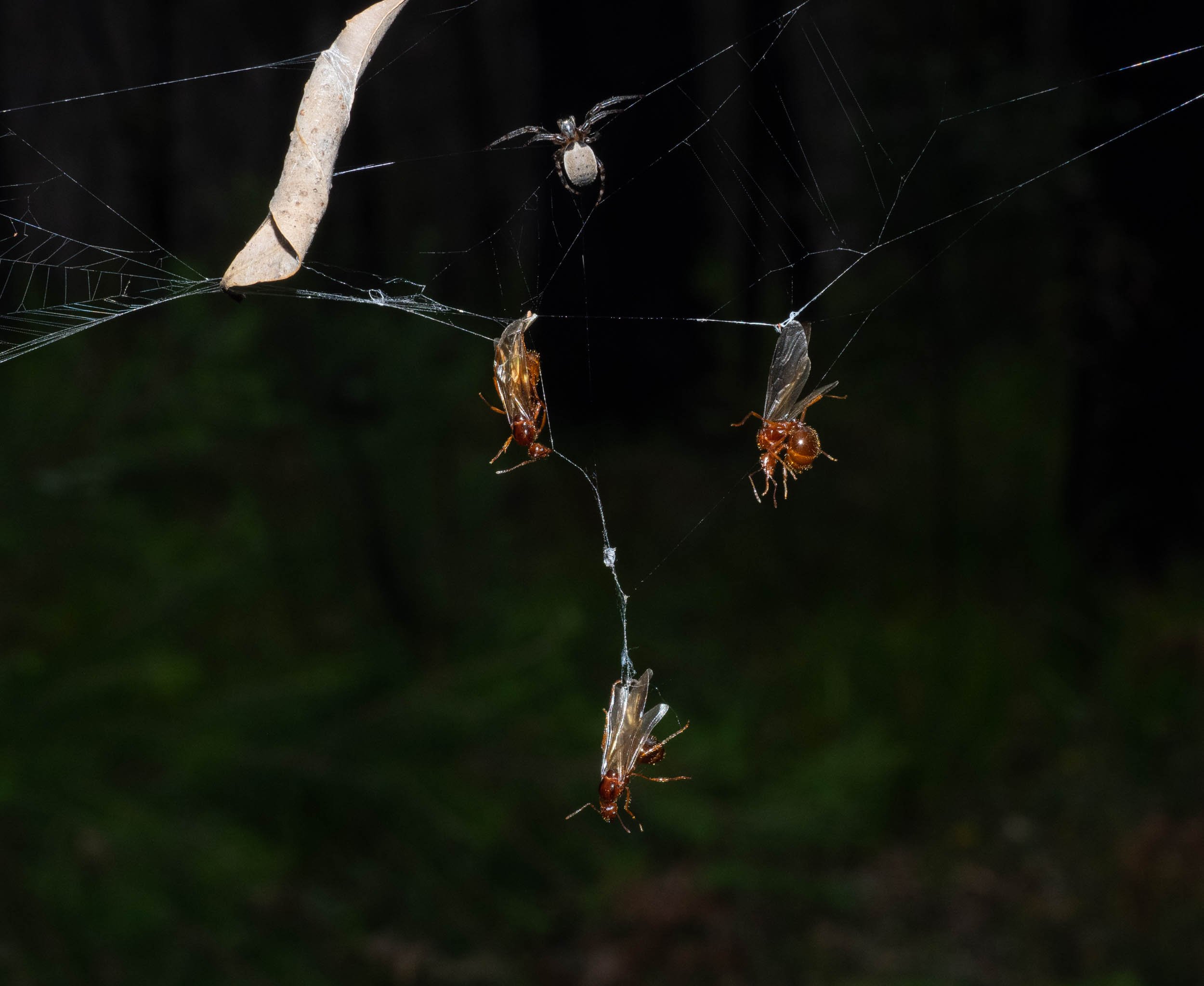

A crowded launch pad.
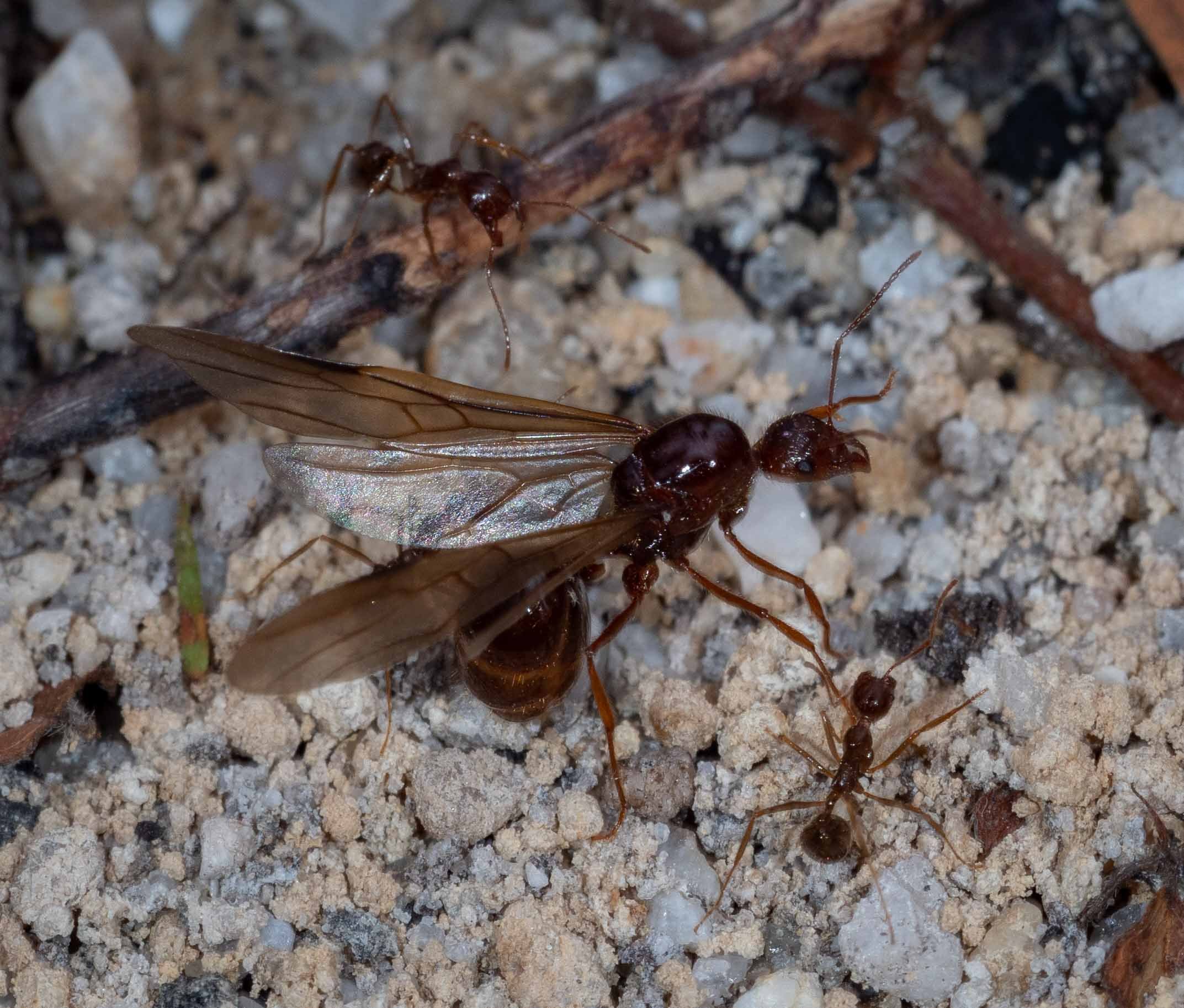
A young queen soon after emergence from the nest, with escorting workers.
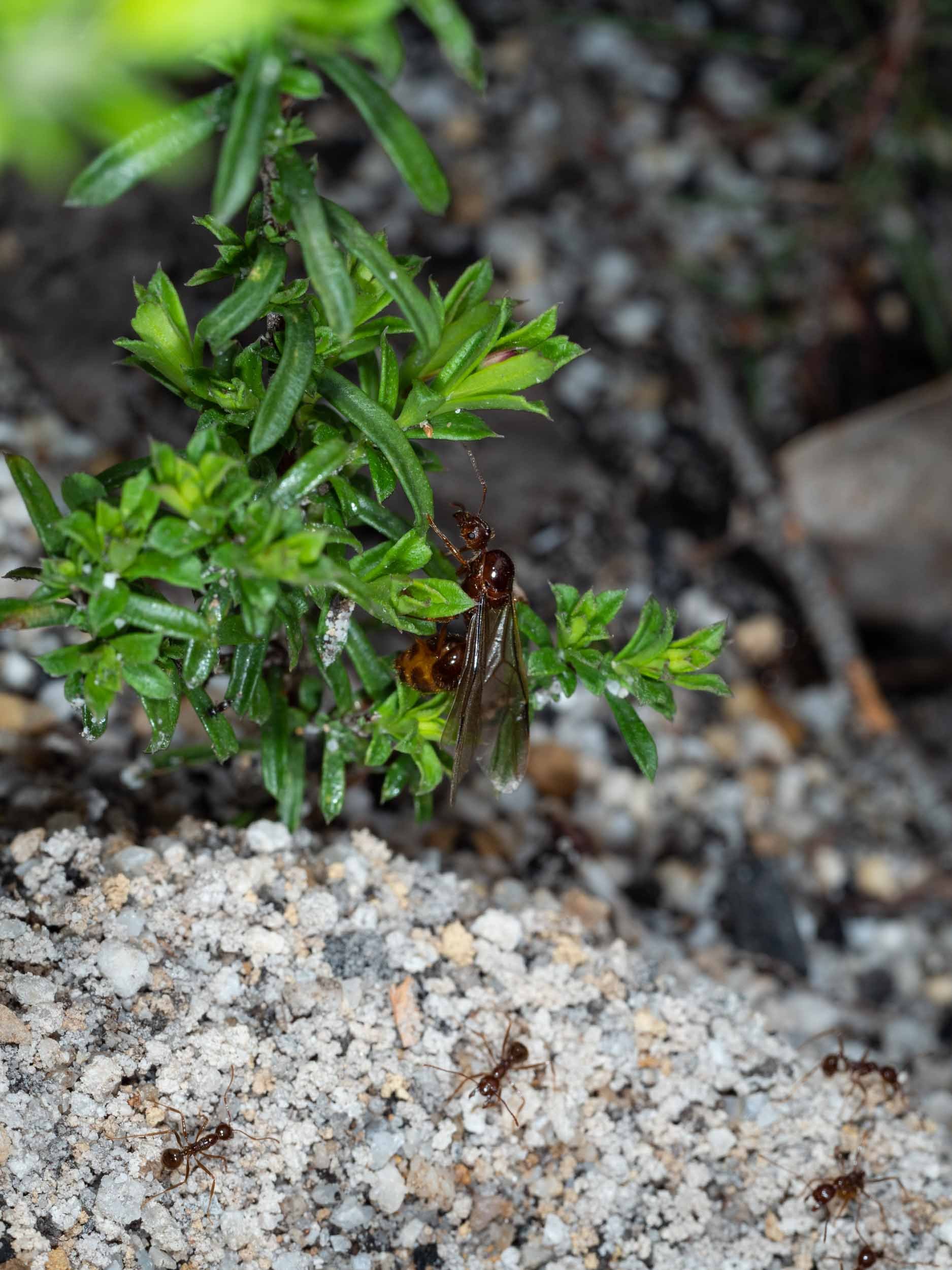
A seedling conveniently growing alongside the nest mound … perhaps from a previously ant-transported seed!
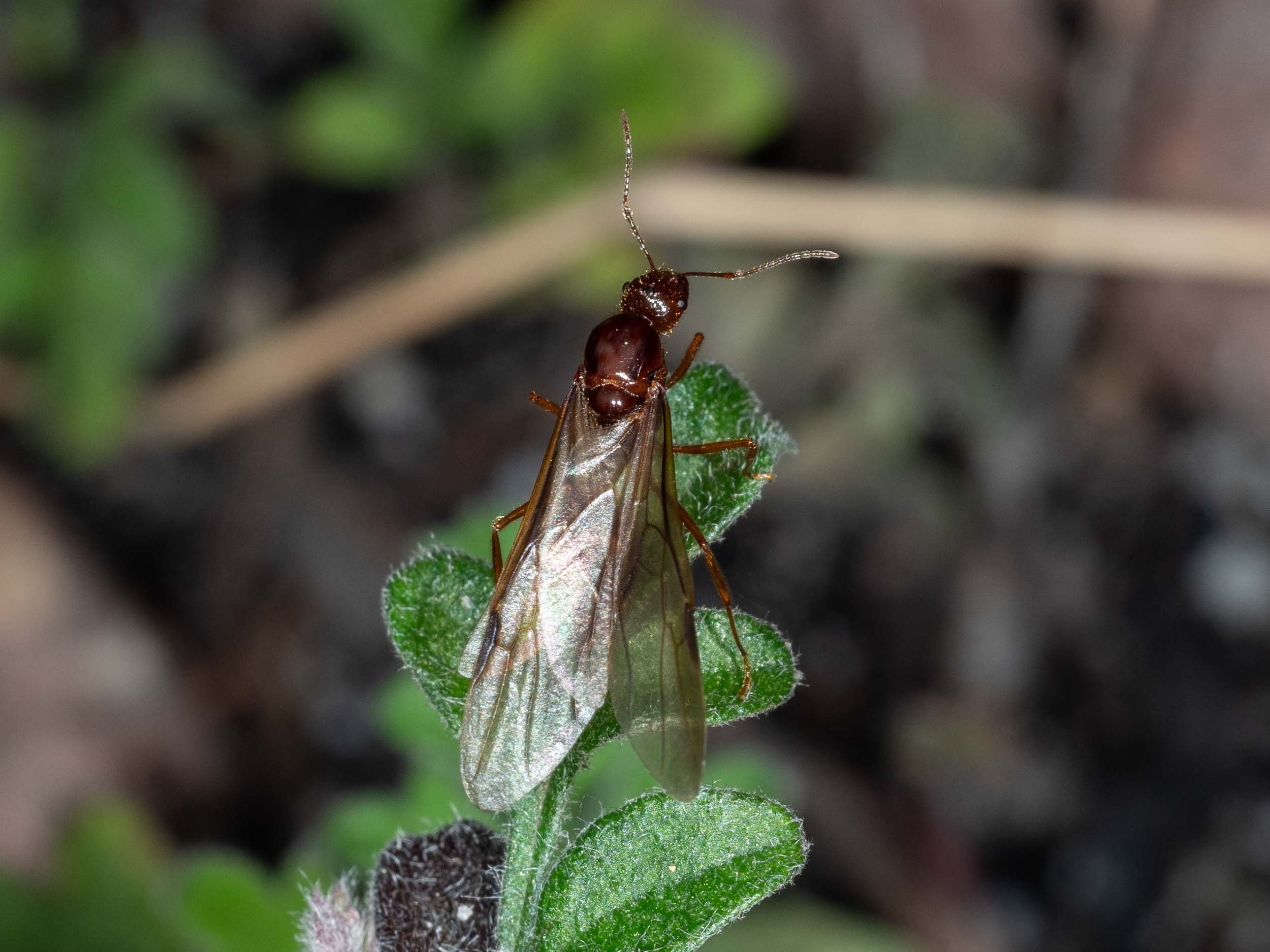
This queen took her first flight within 2 seconds of my taking this photo.
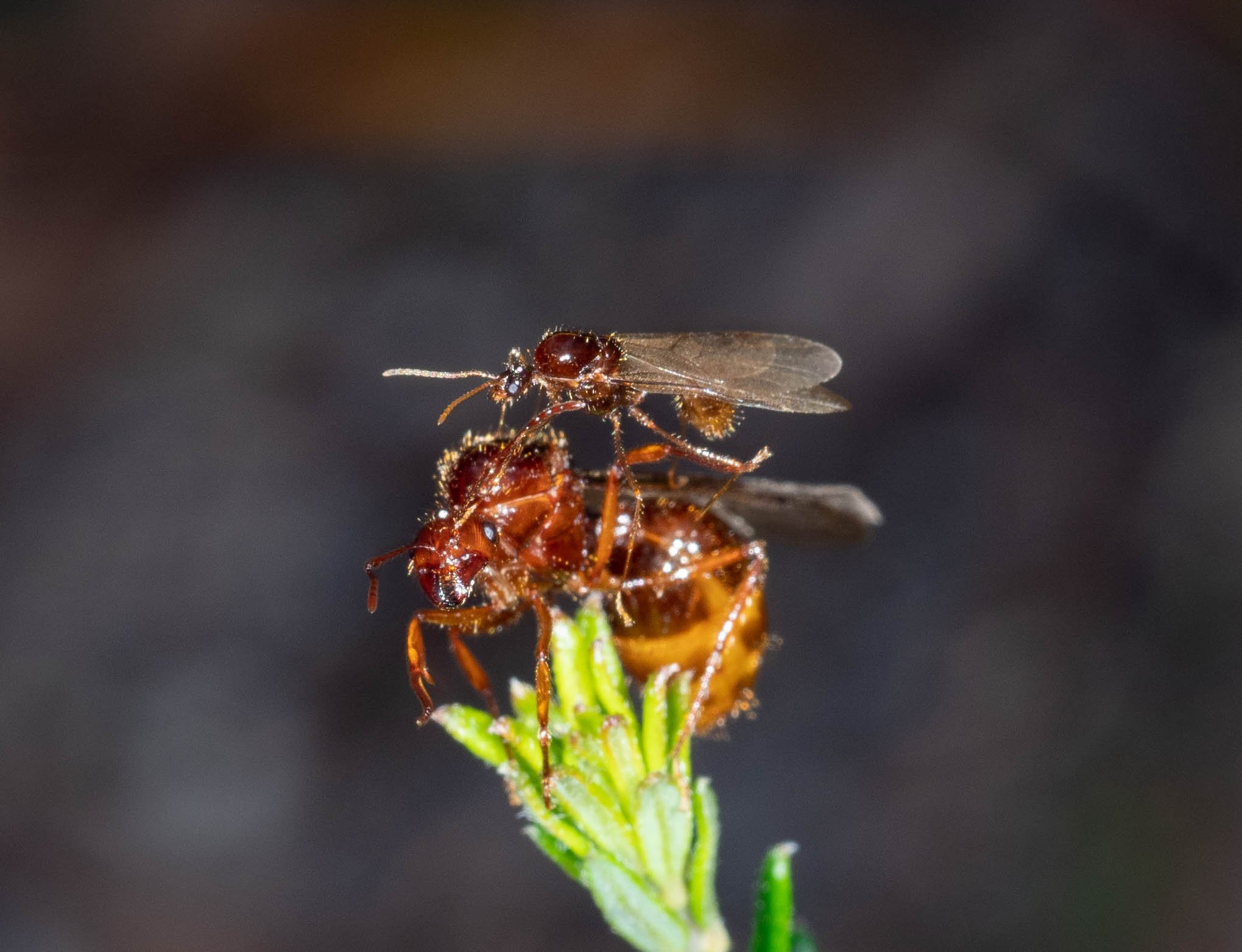
This was the only male we sighted anywhere near the mounds. He clambered up the plant, over the perched female, and immediately took flight. They did not mate. She flew shortly after.
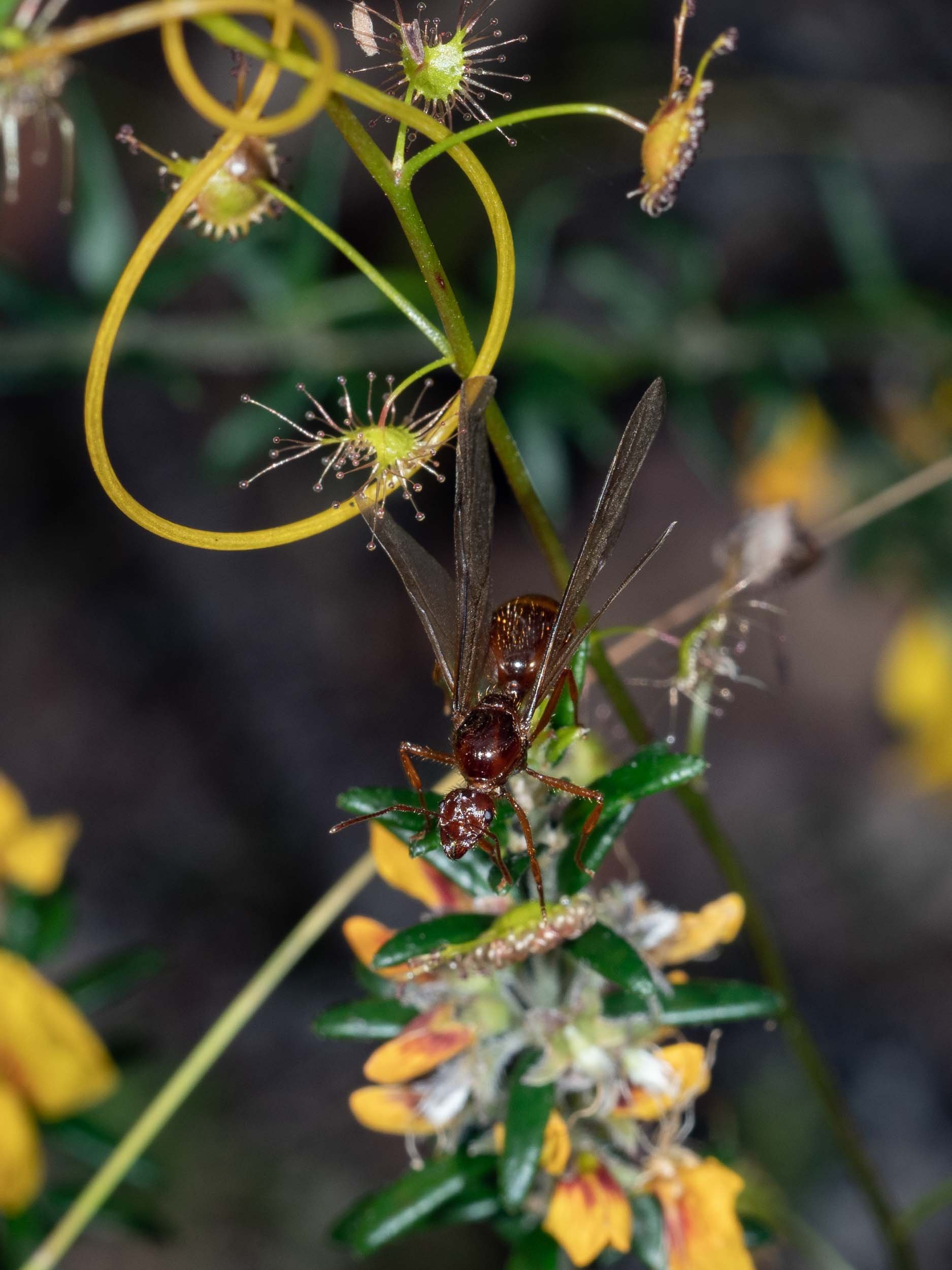
A queen about to launch, successful despite the nearby sundew hazards.
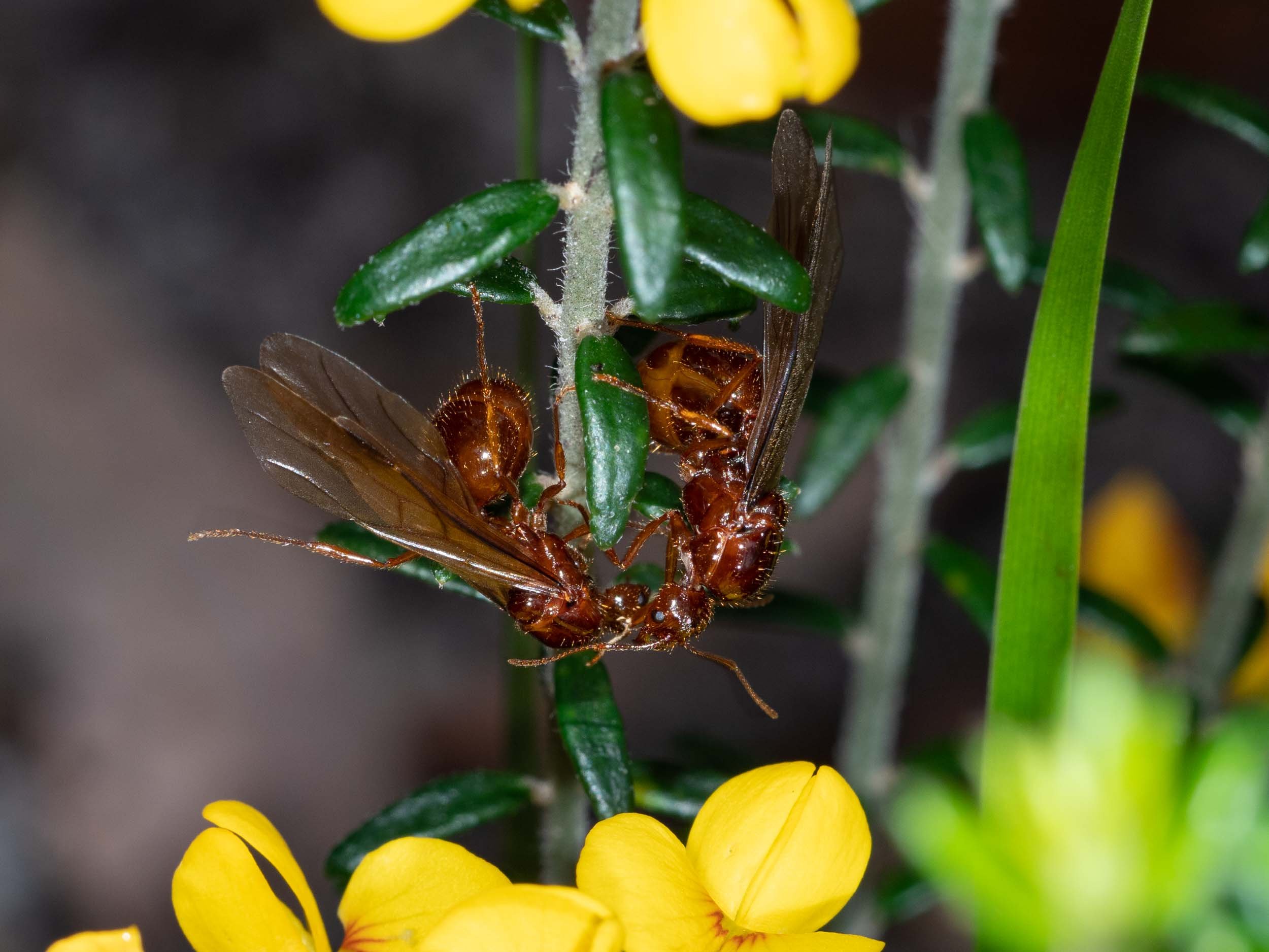
A brief interaction between sister queens before both continued their upward climb.
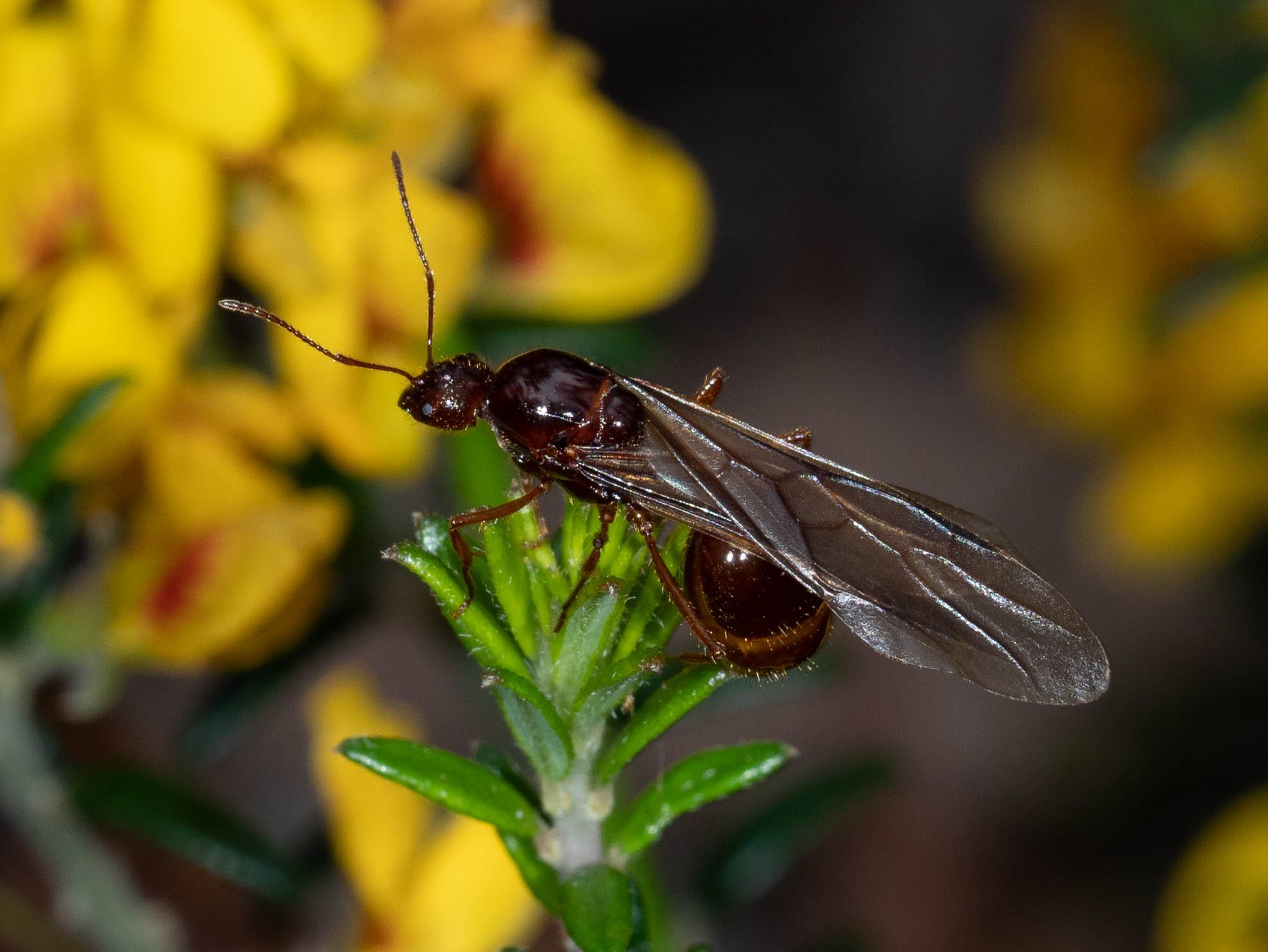
Yet another queen about to take flight.
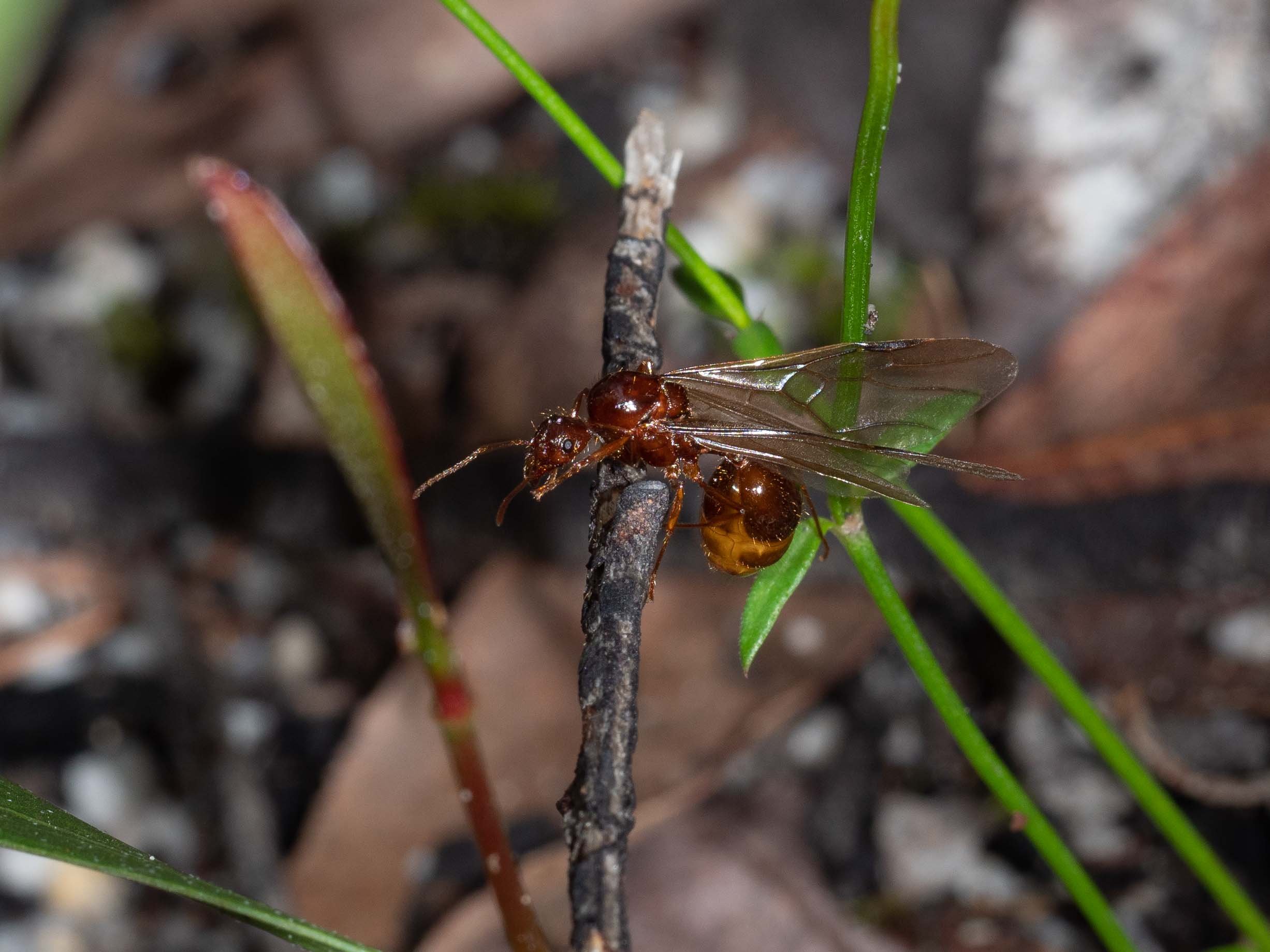
any elevation might serve as a perch, even fallen twigs
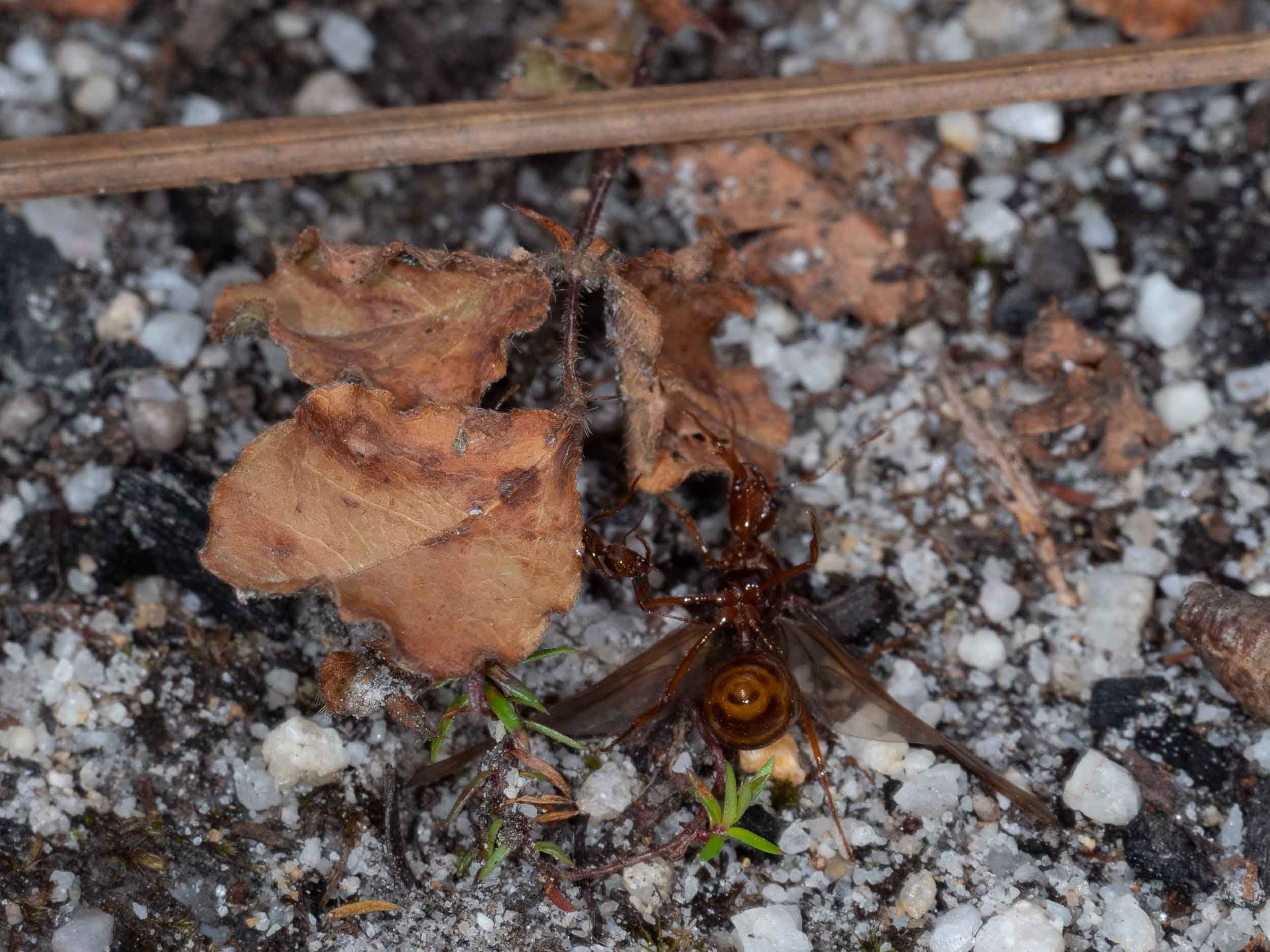
Having climbed atop a fallen leaf, this queen falls backward … perhaps pulled down by a worker.
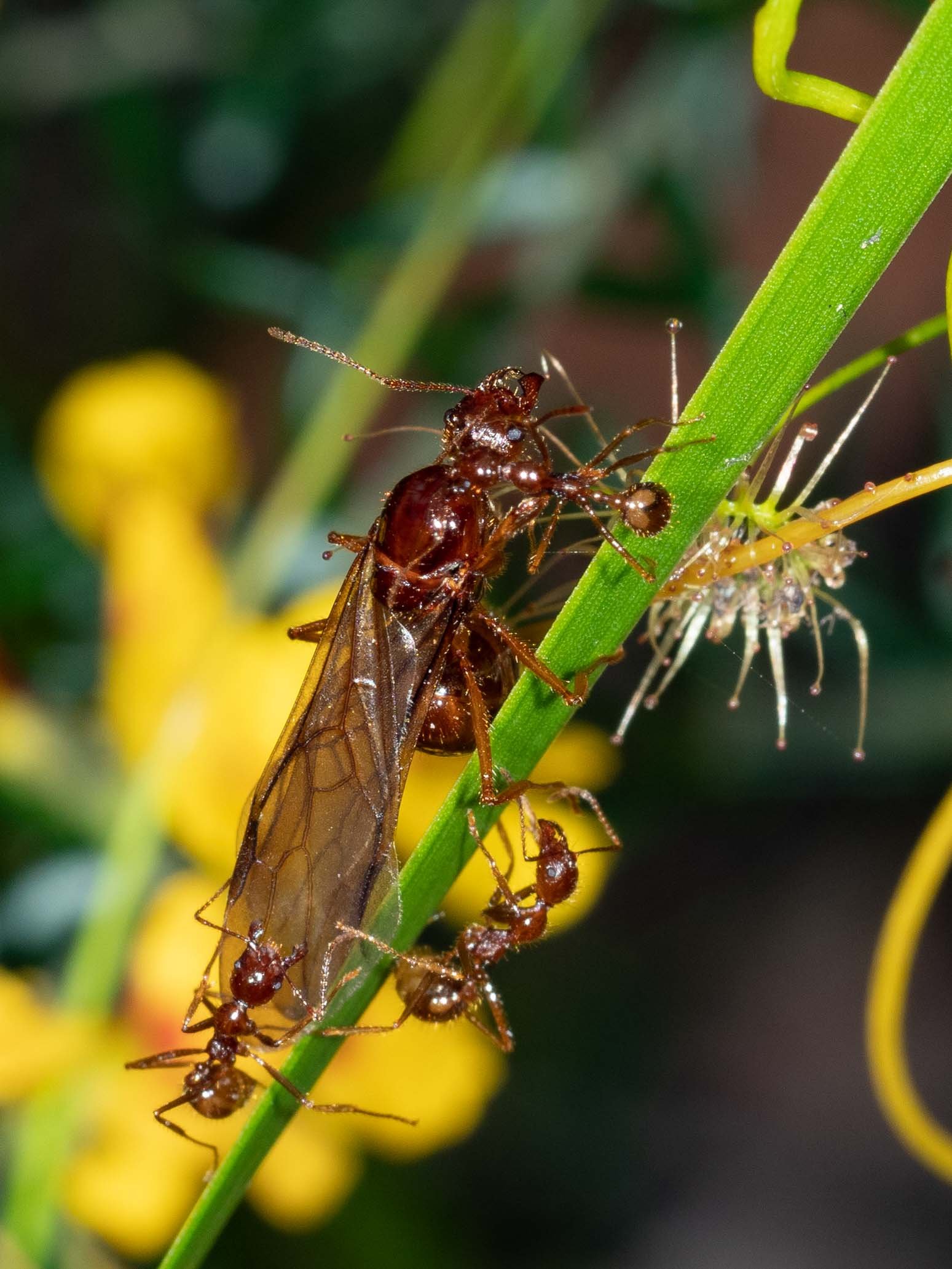
This queen was caught up in the sticky leaves of a sundew, but her escorting workers quickly responded. She was soon freed and continued her upward climb.












































